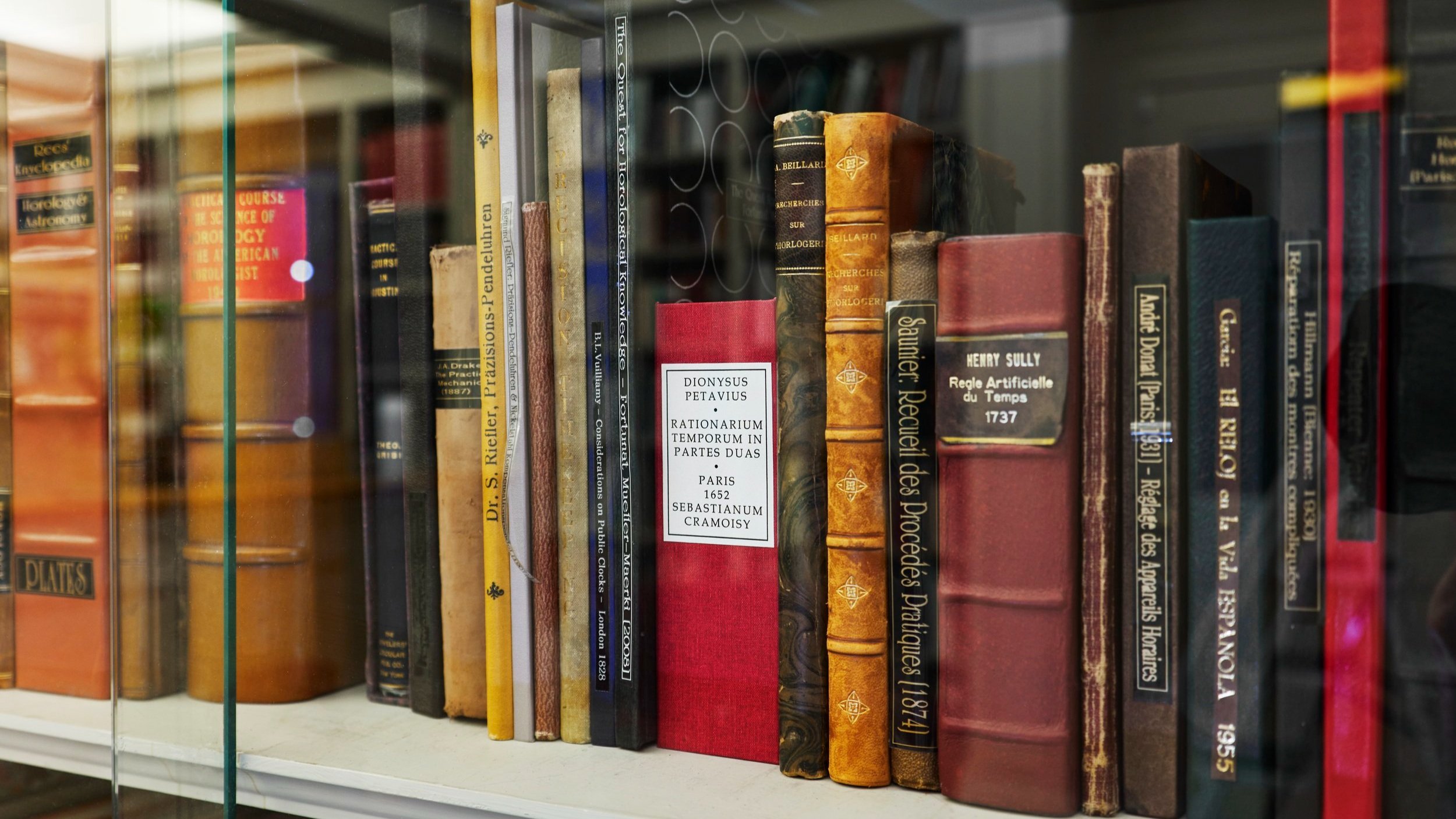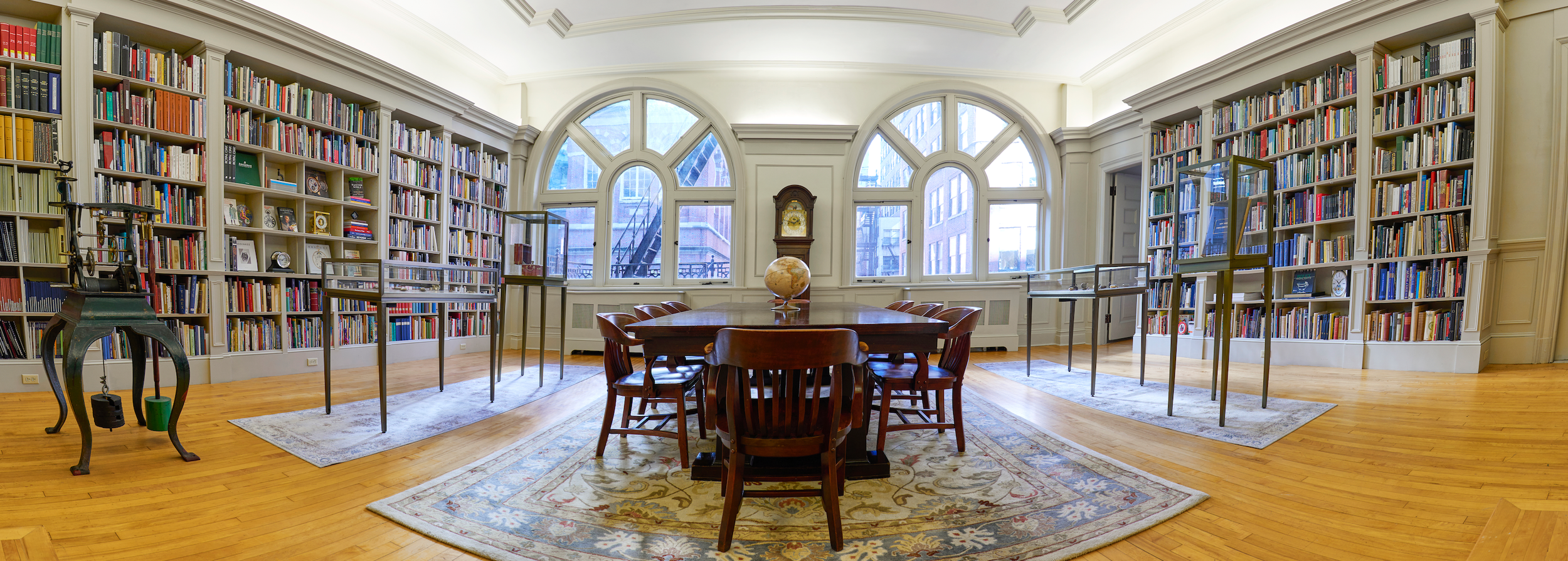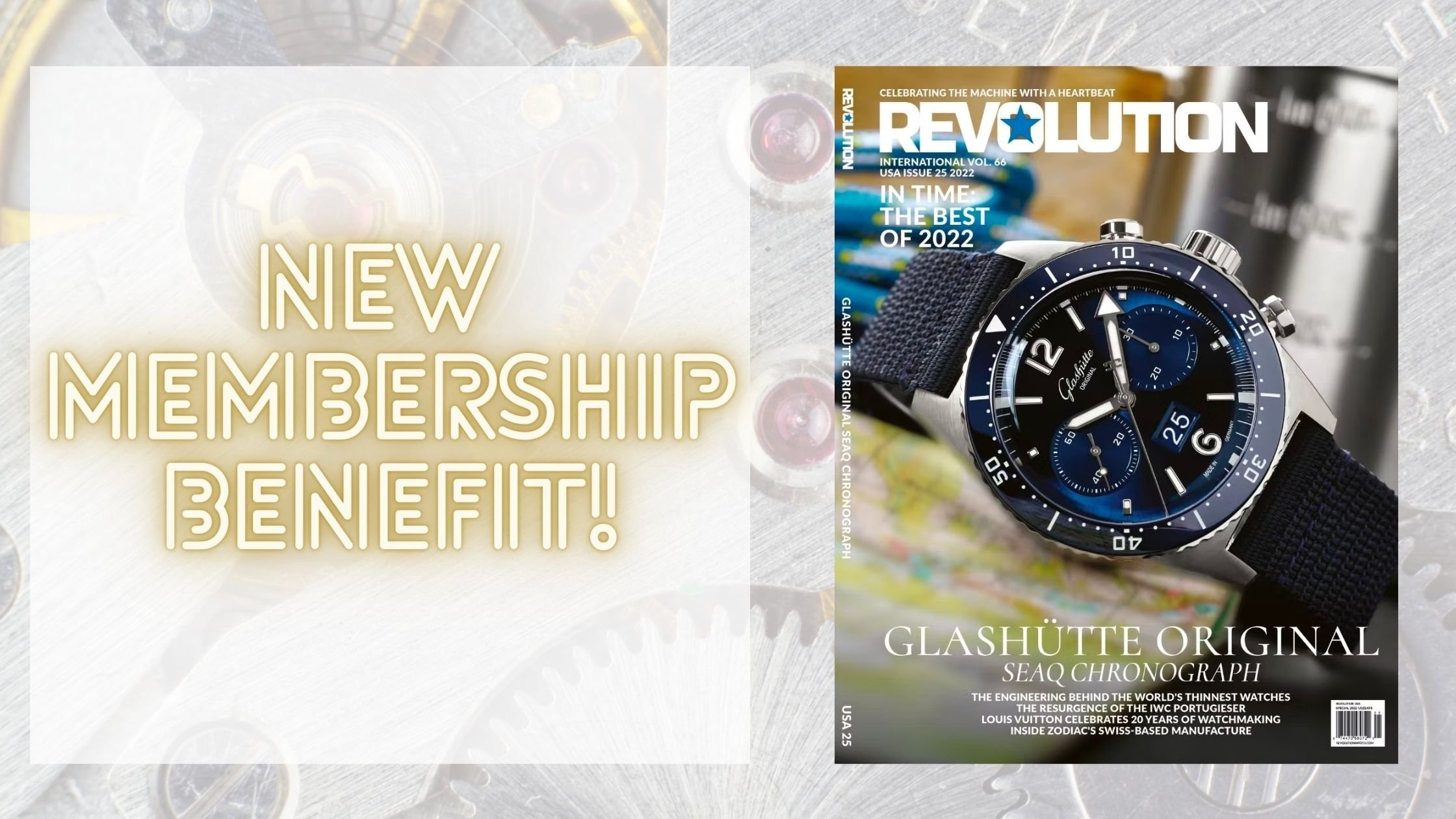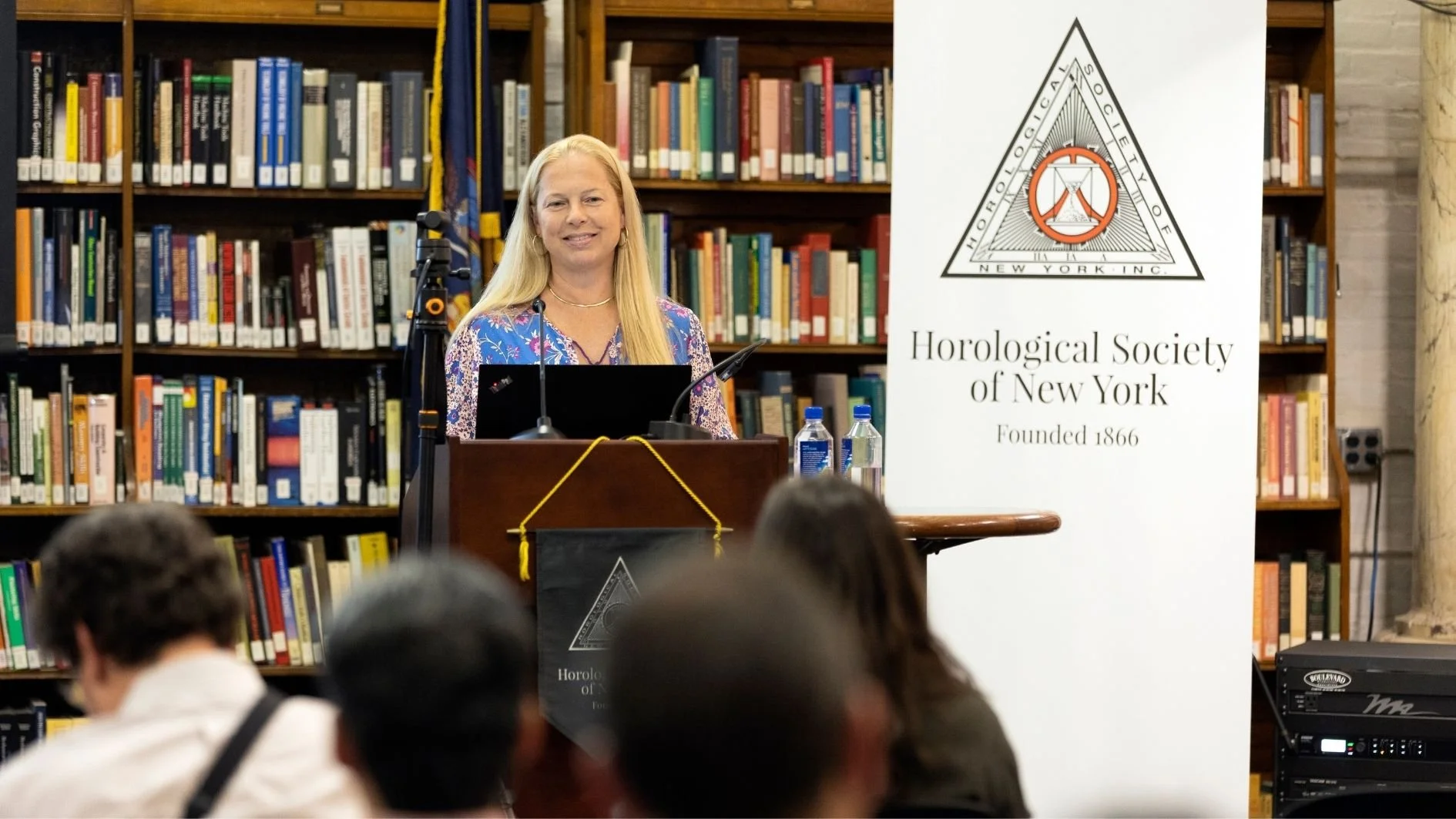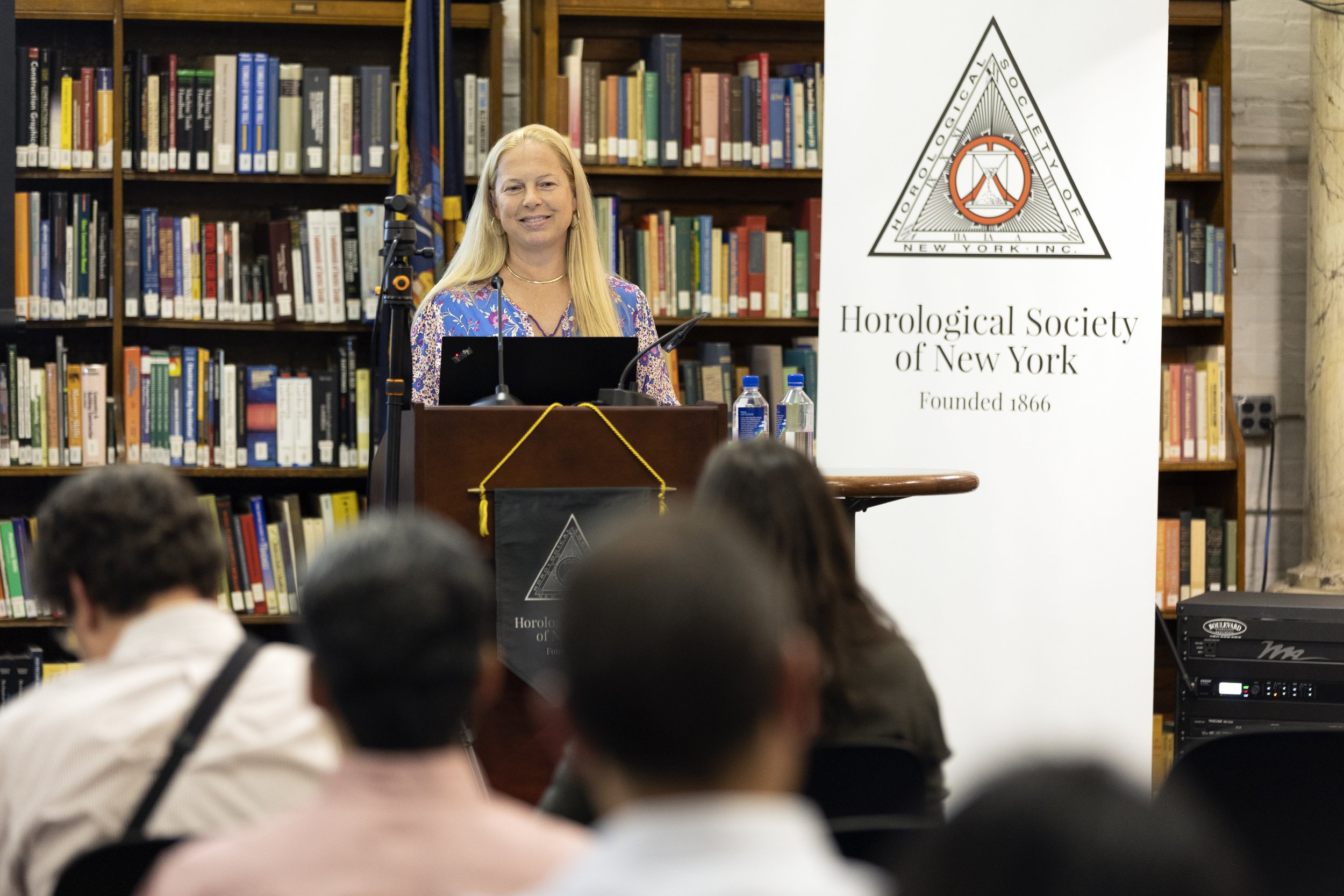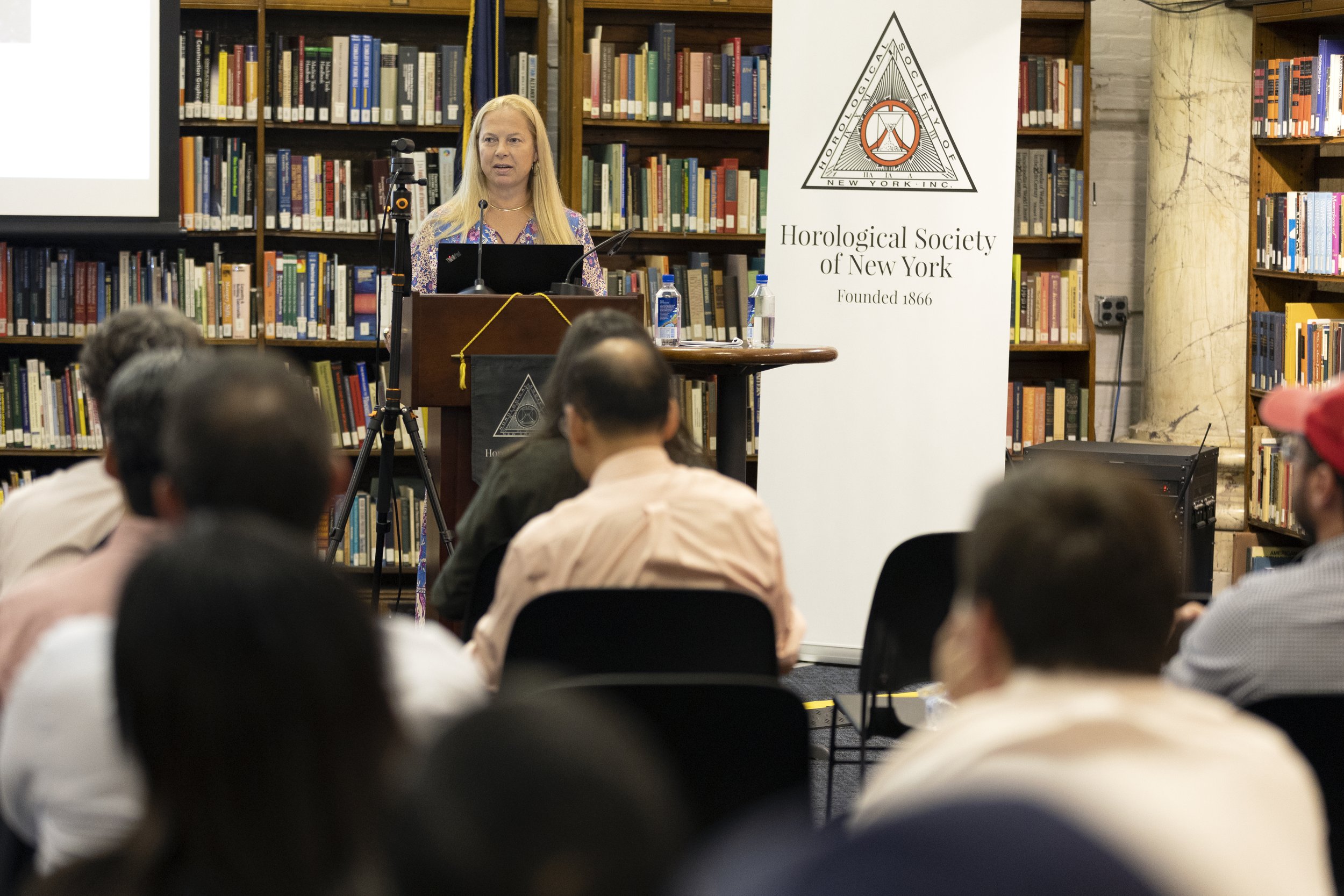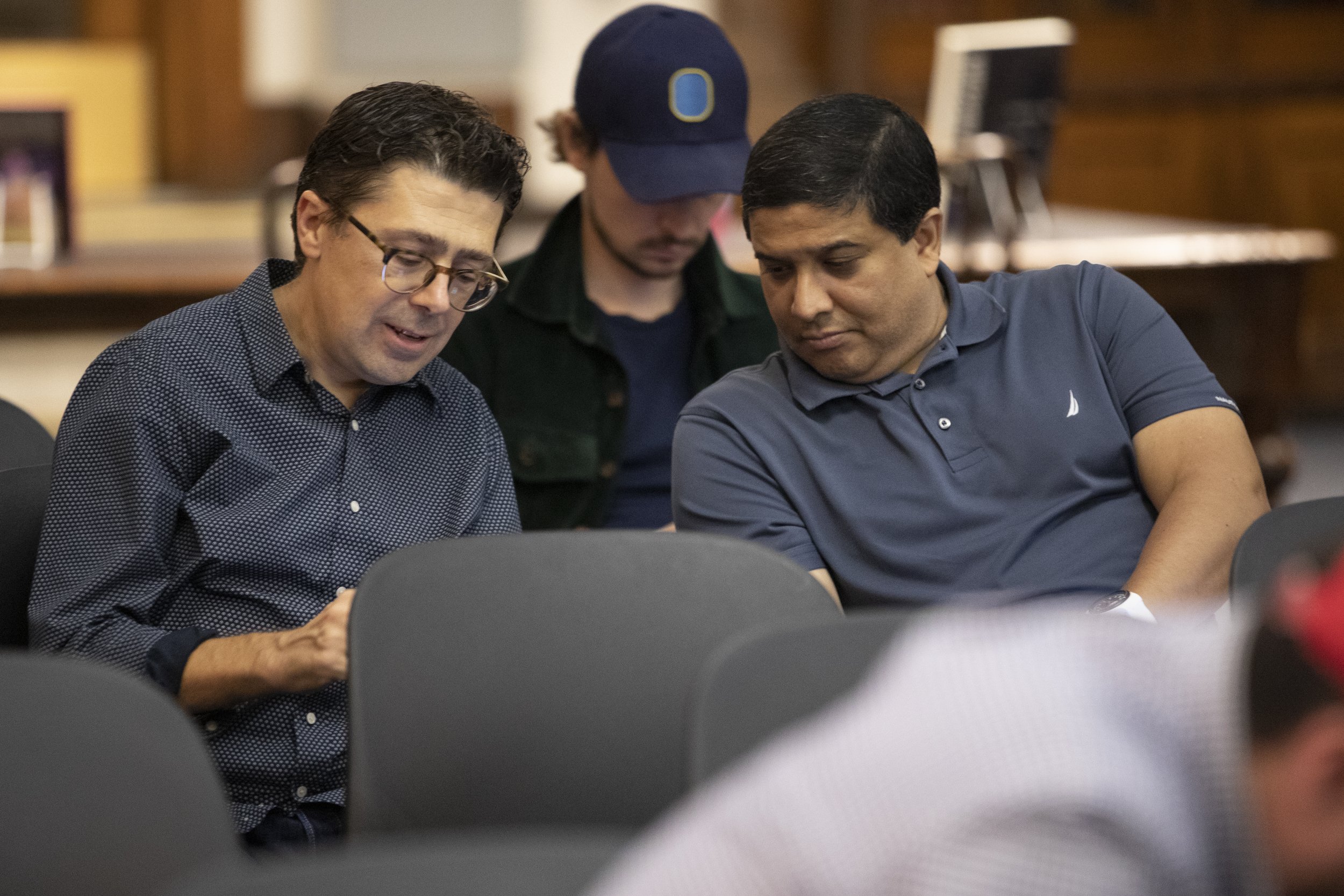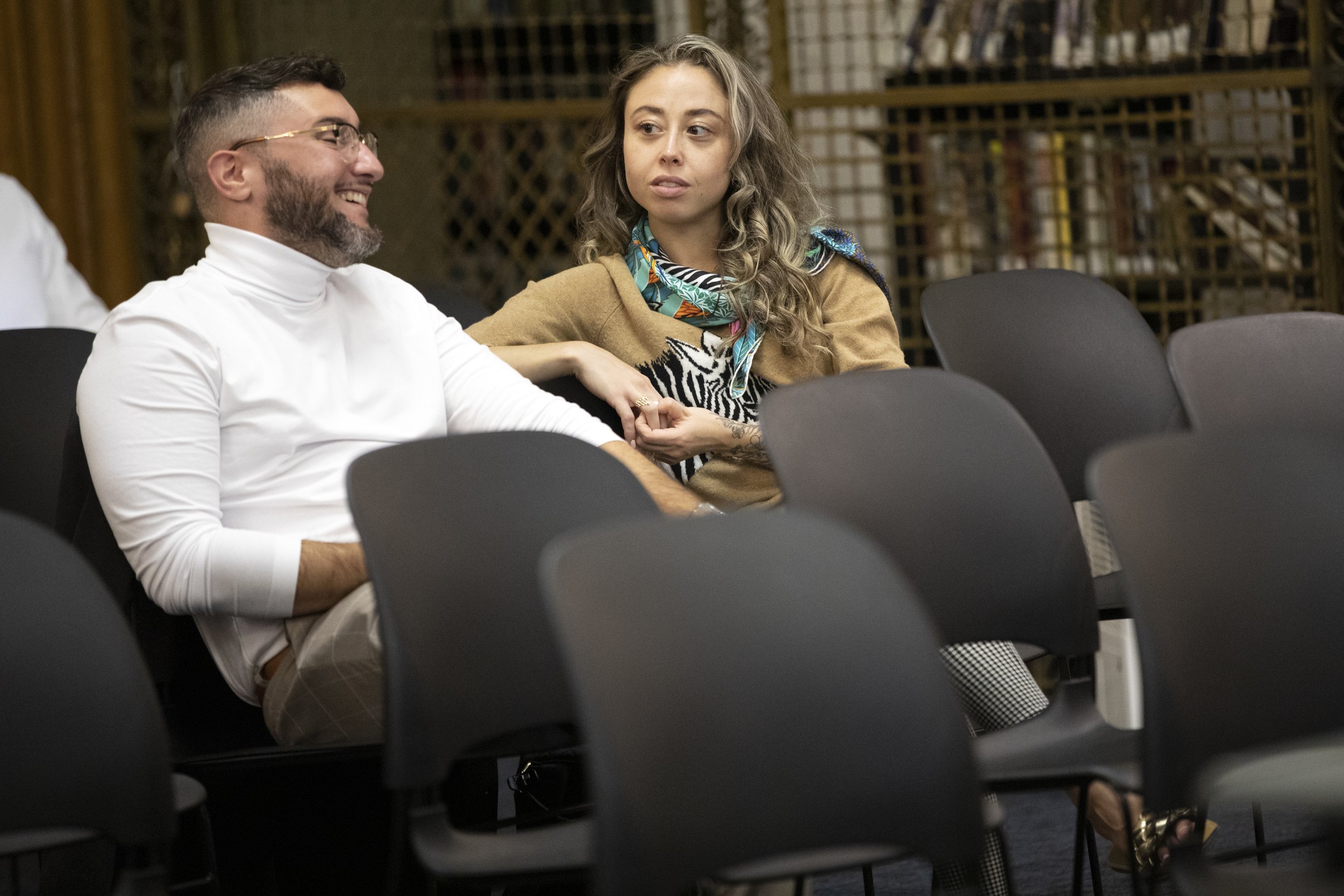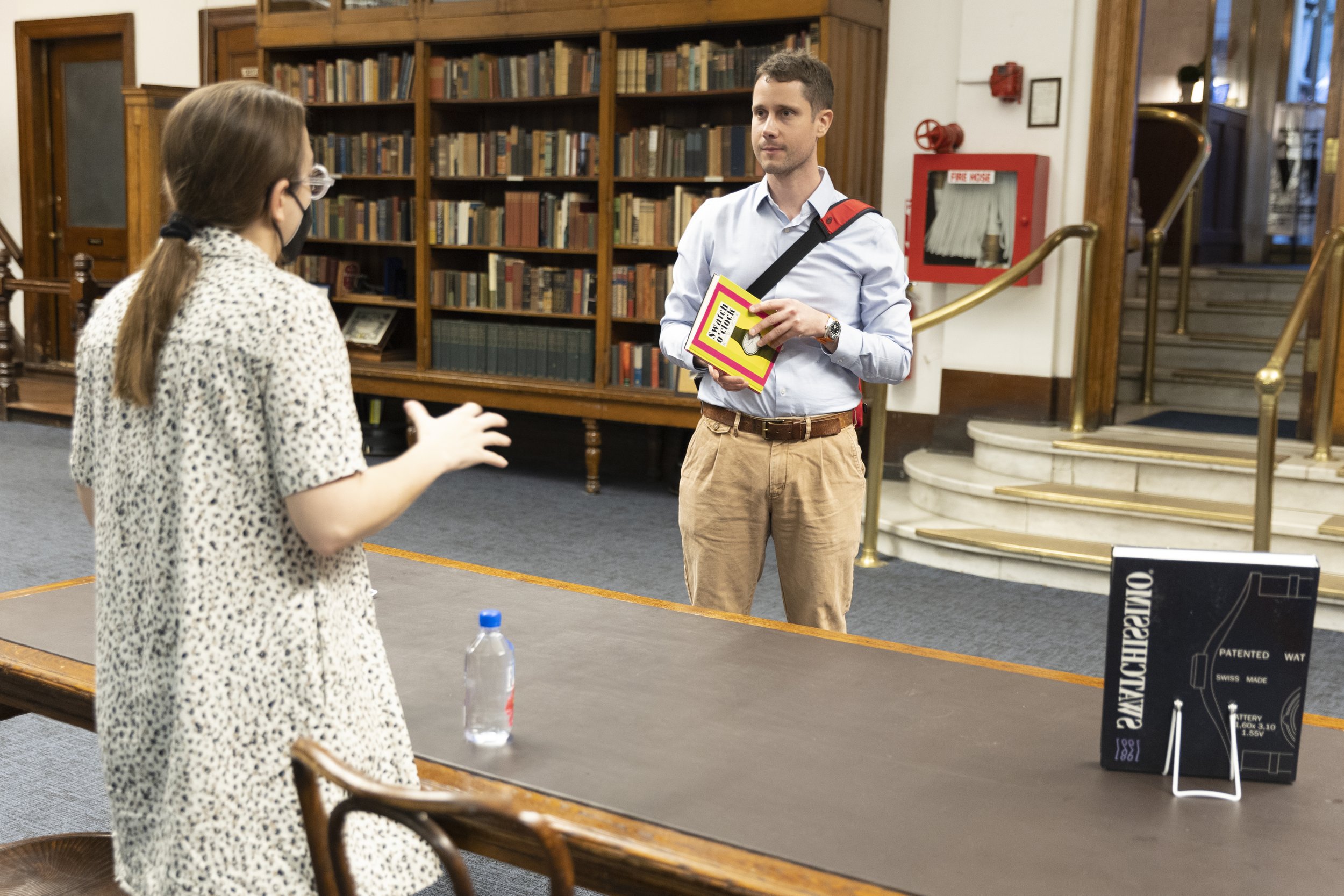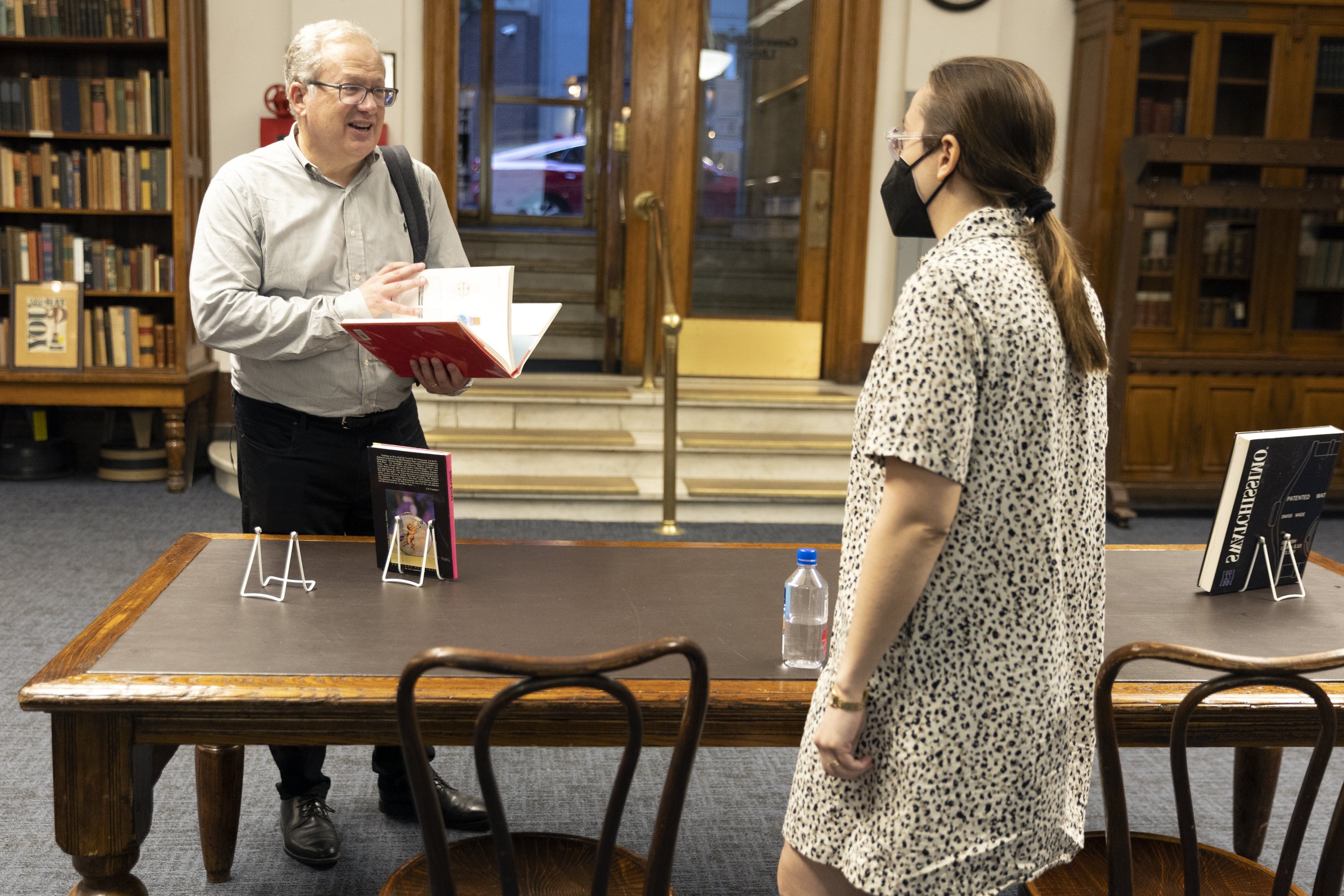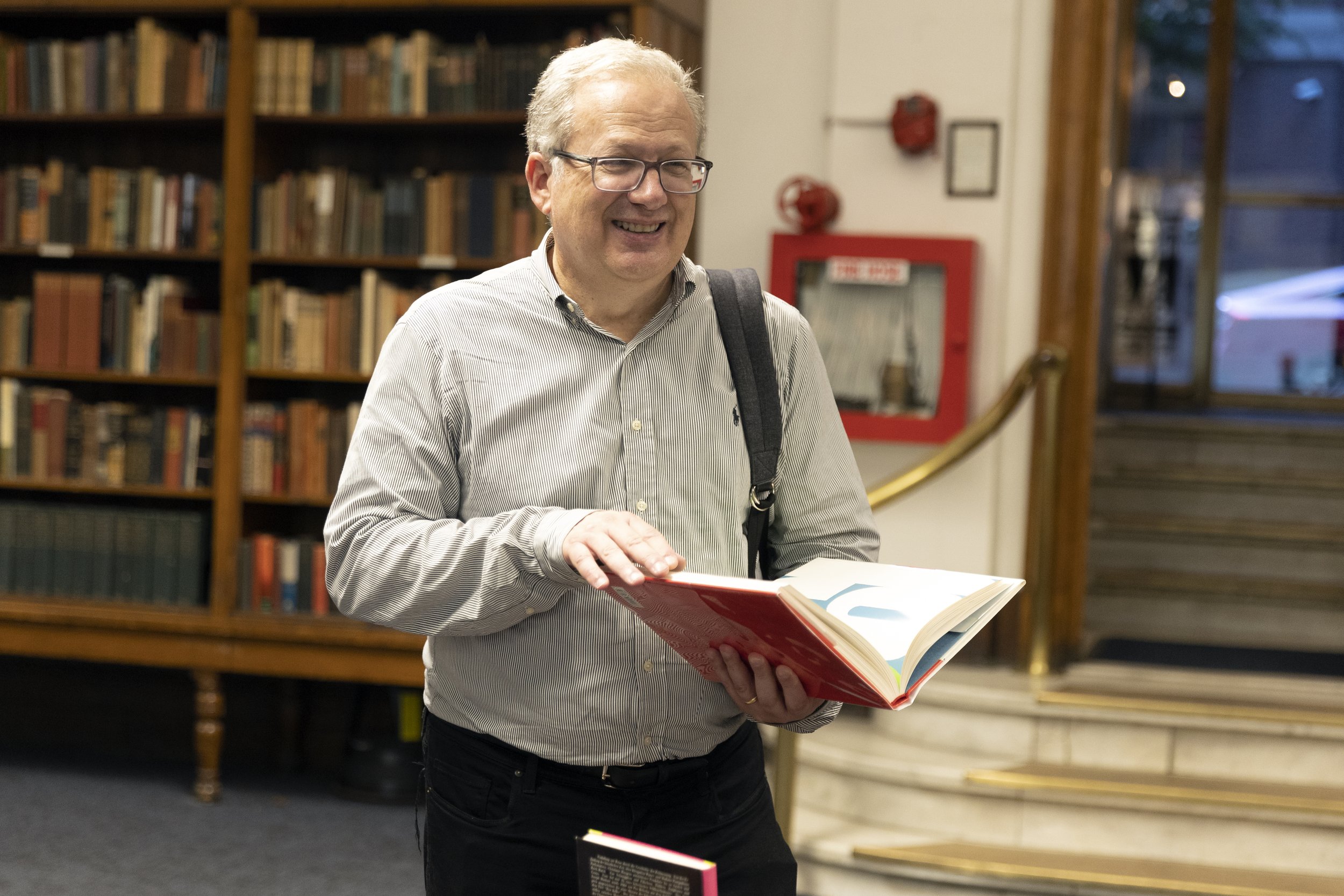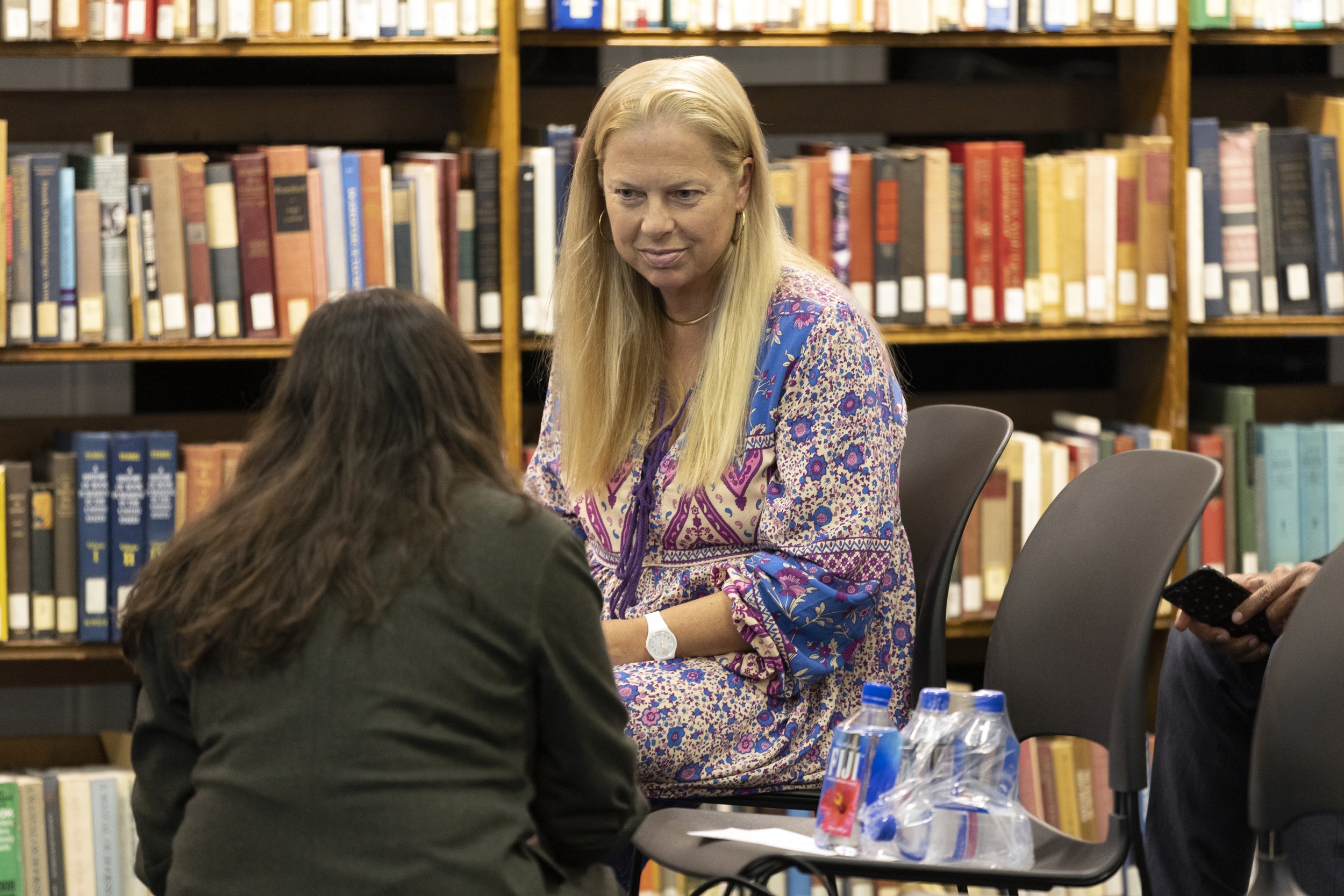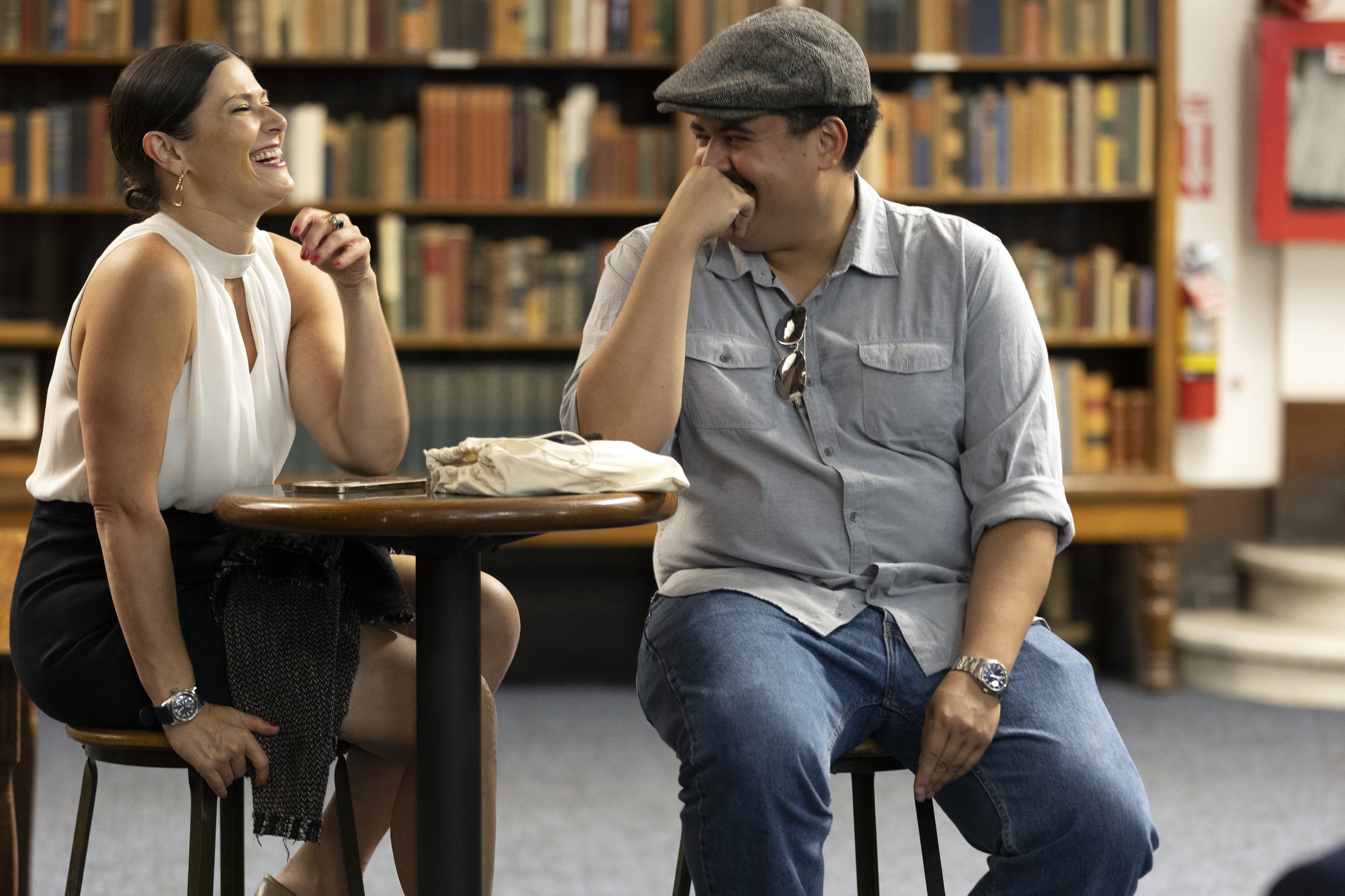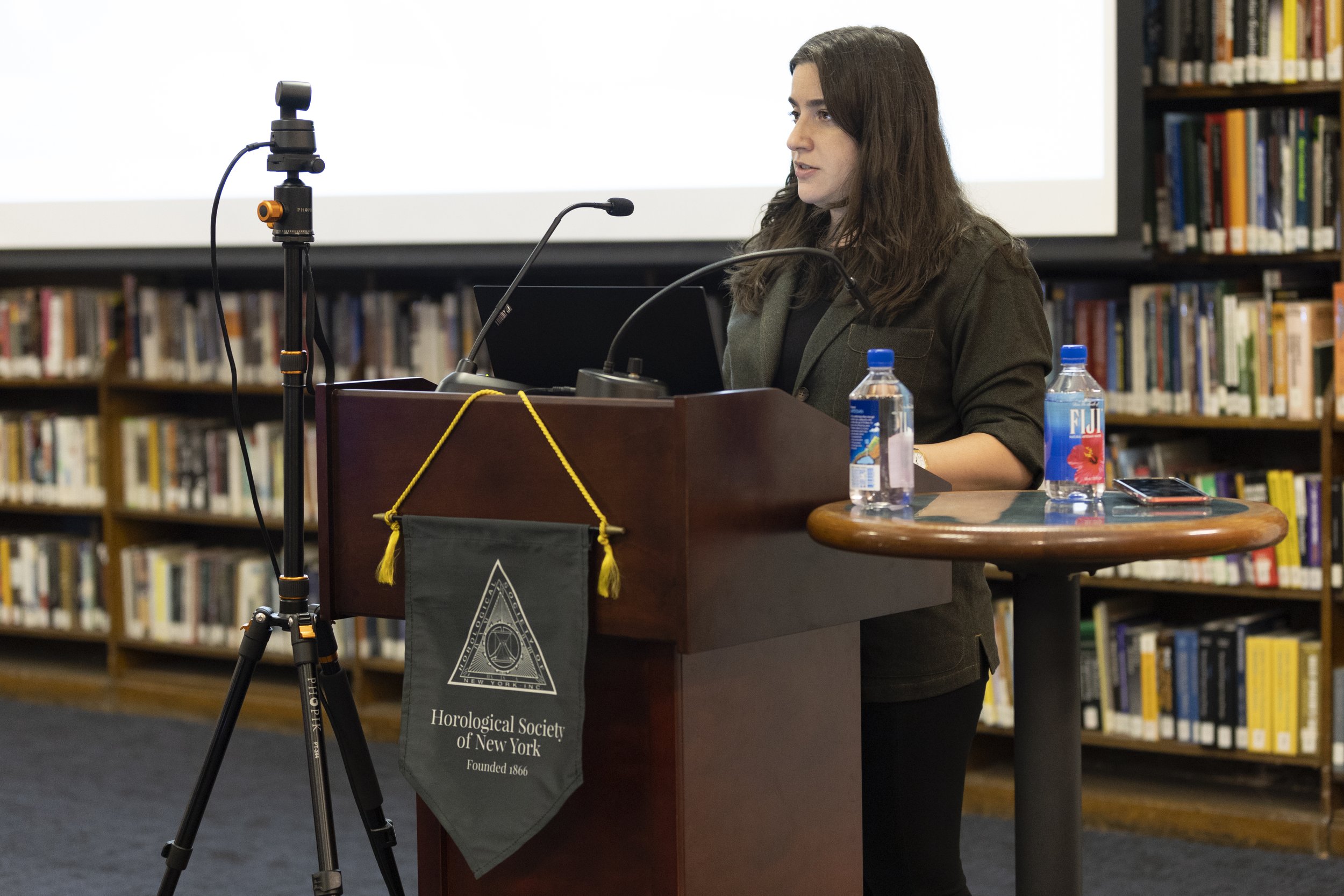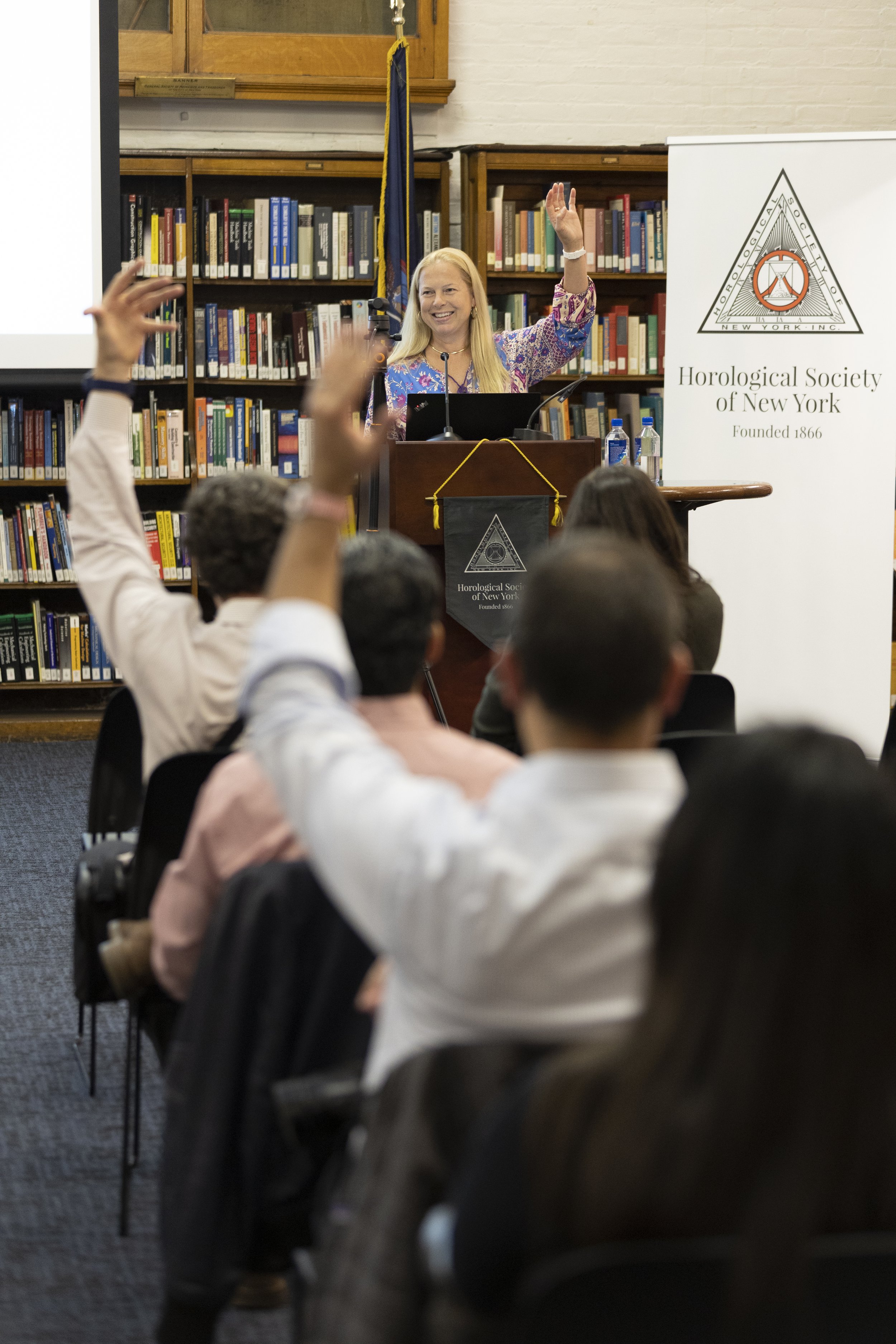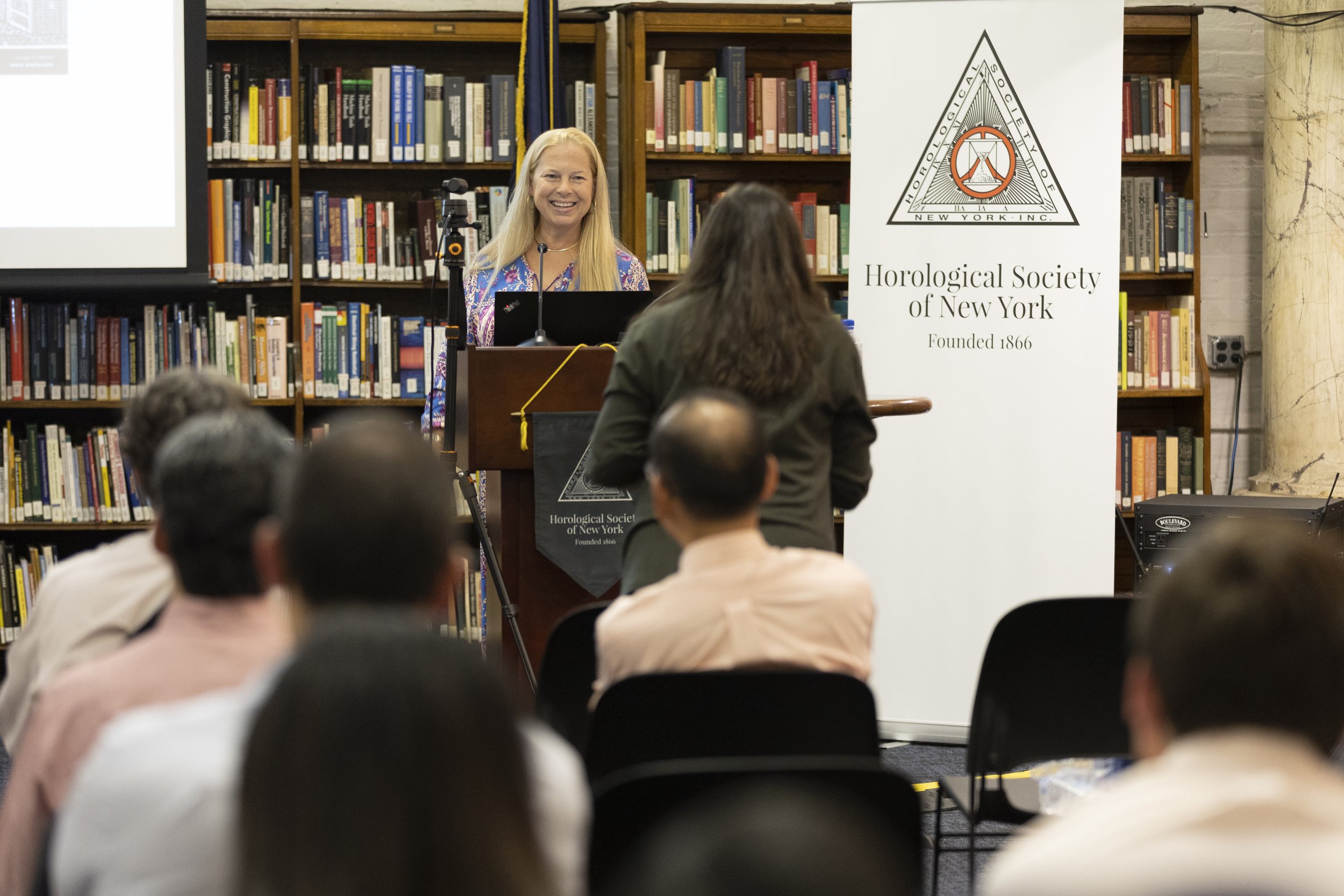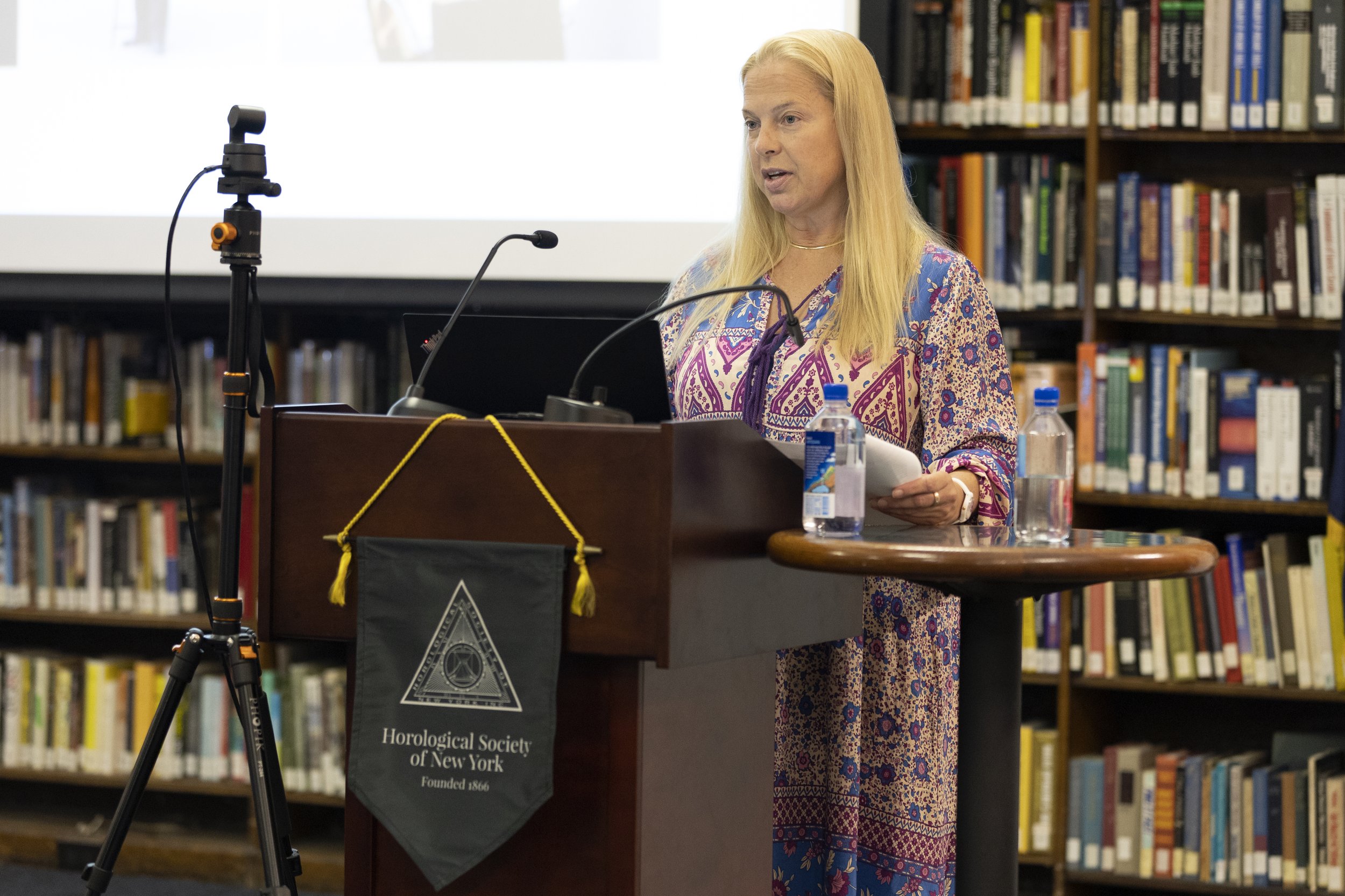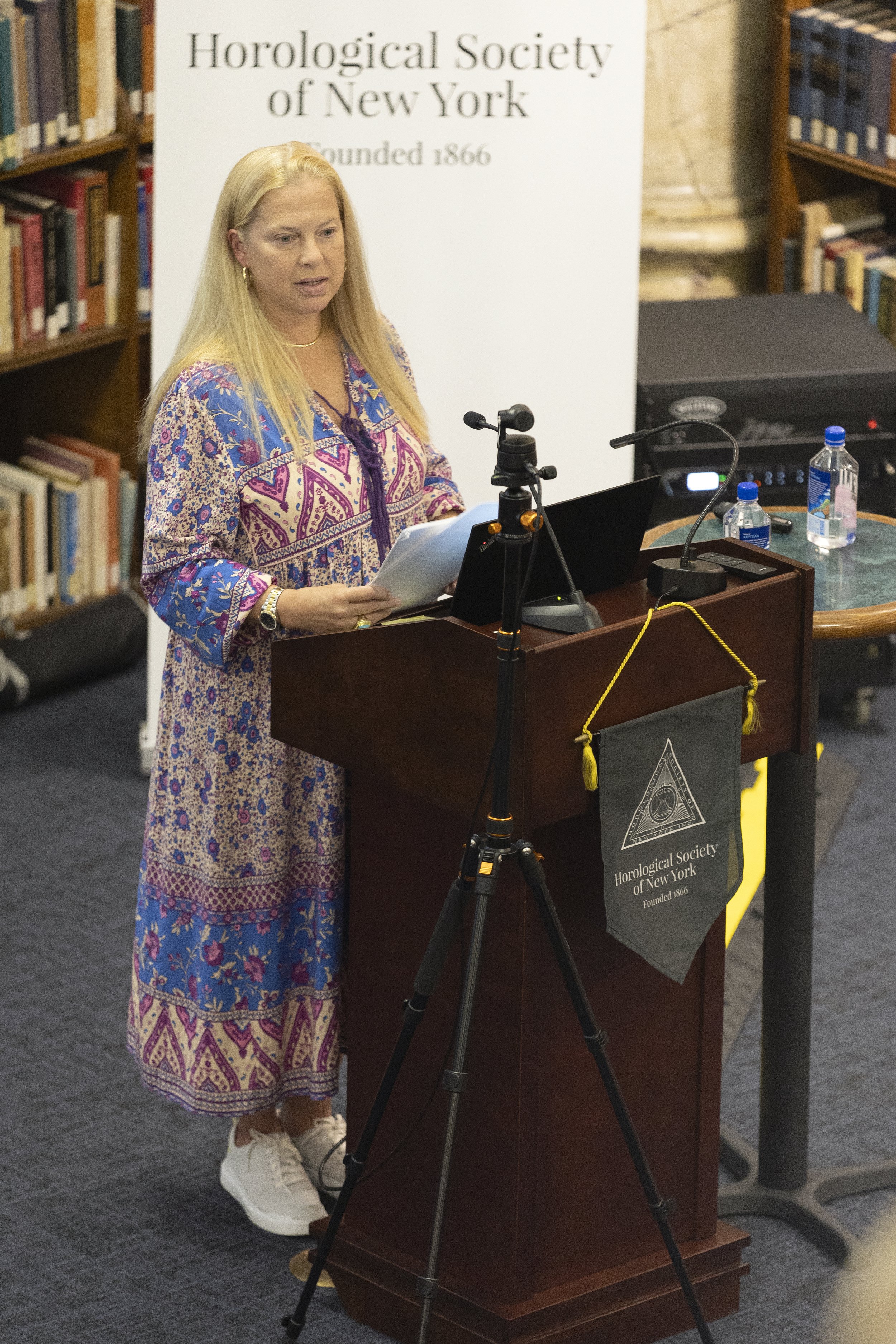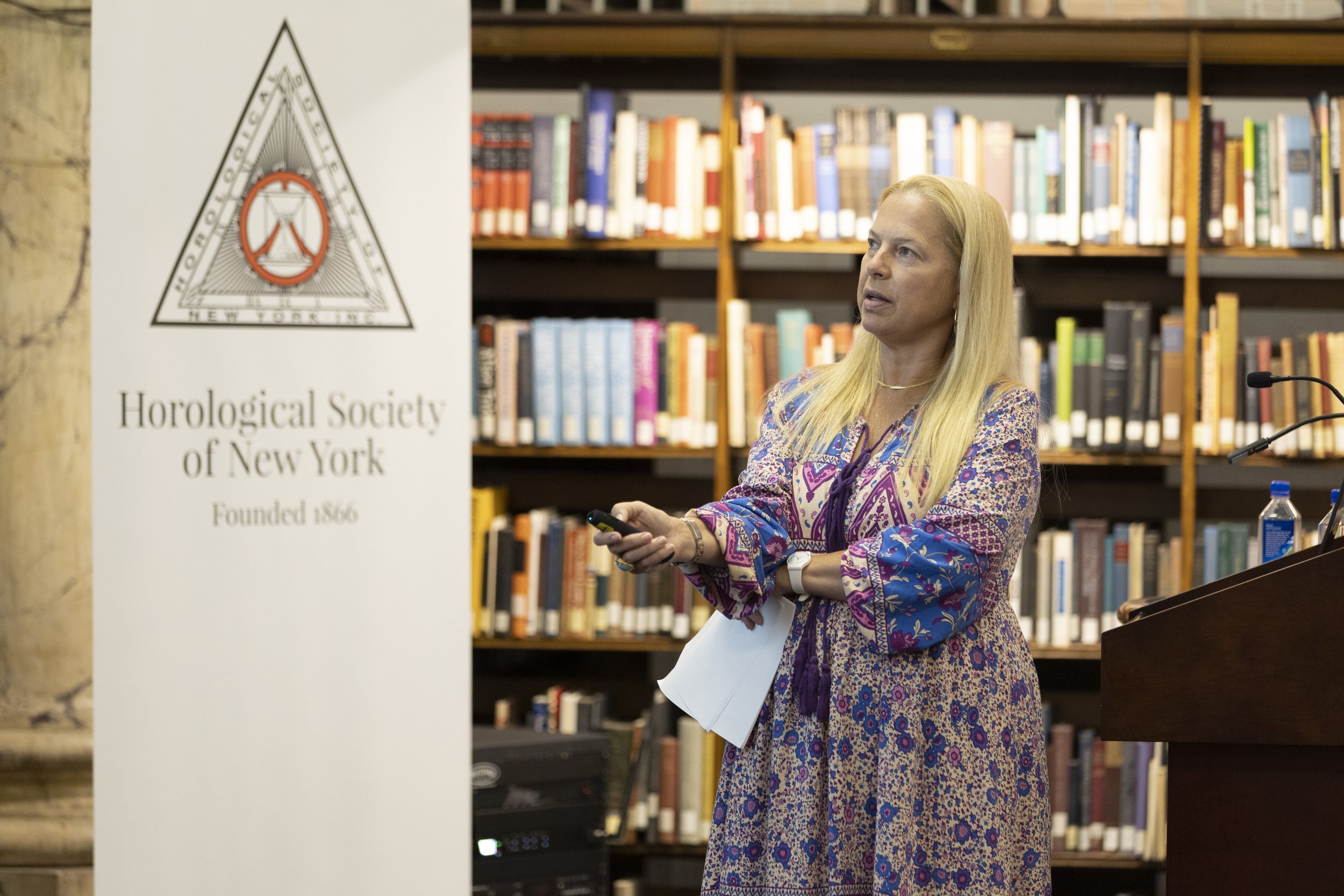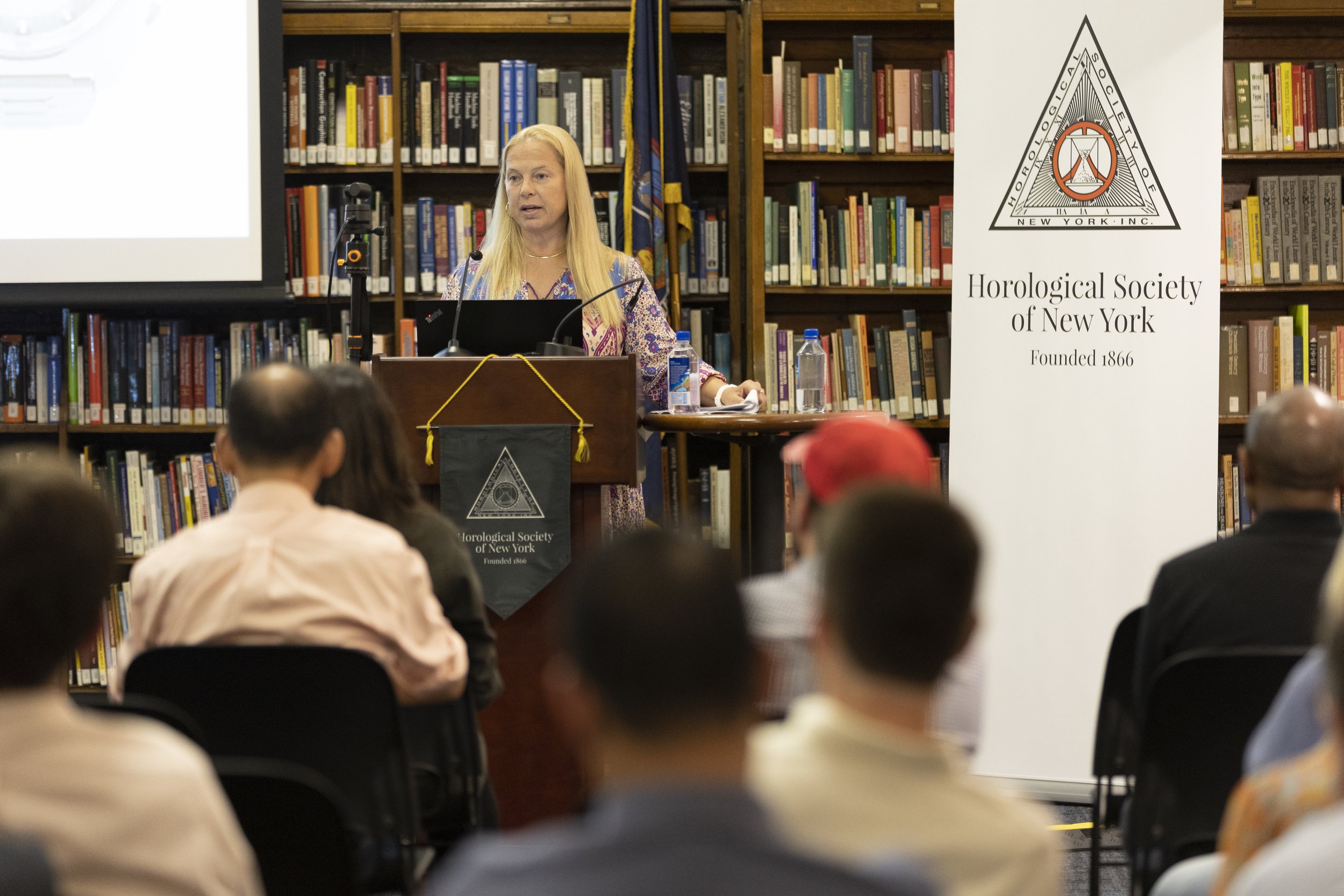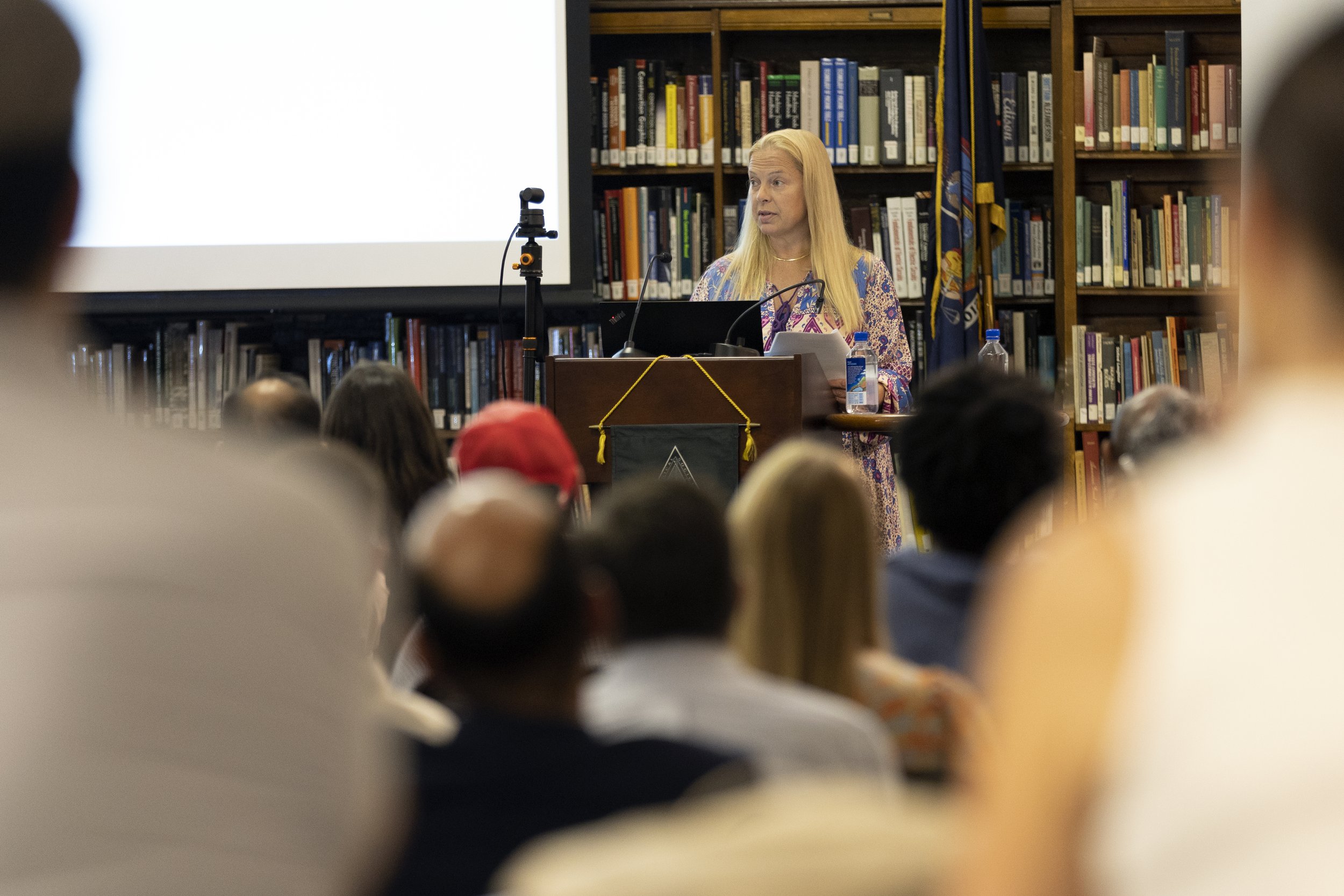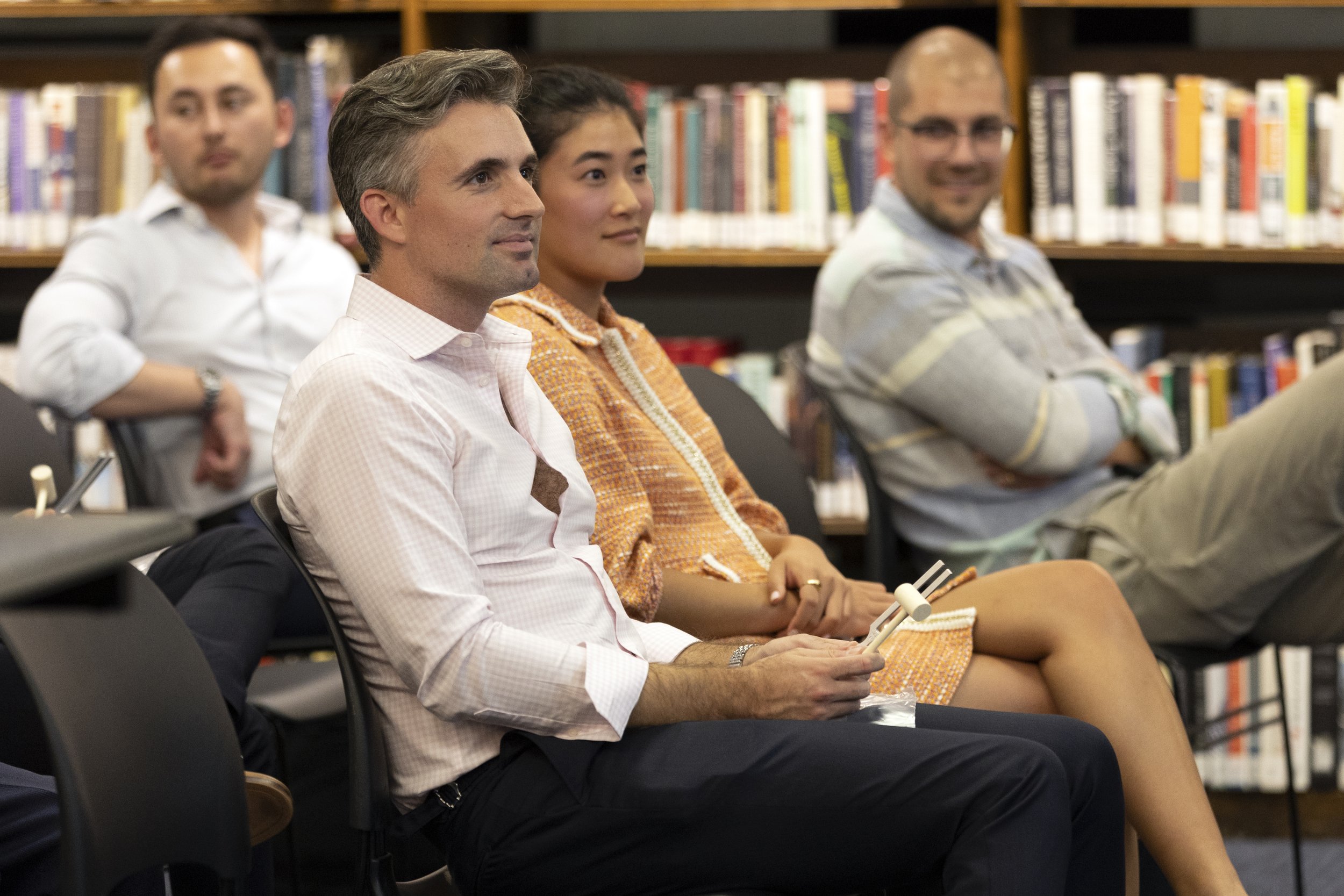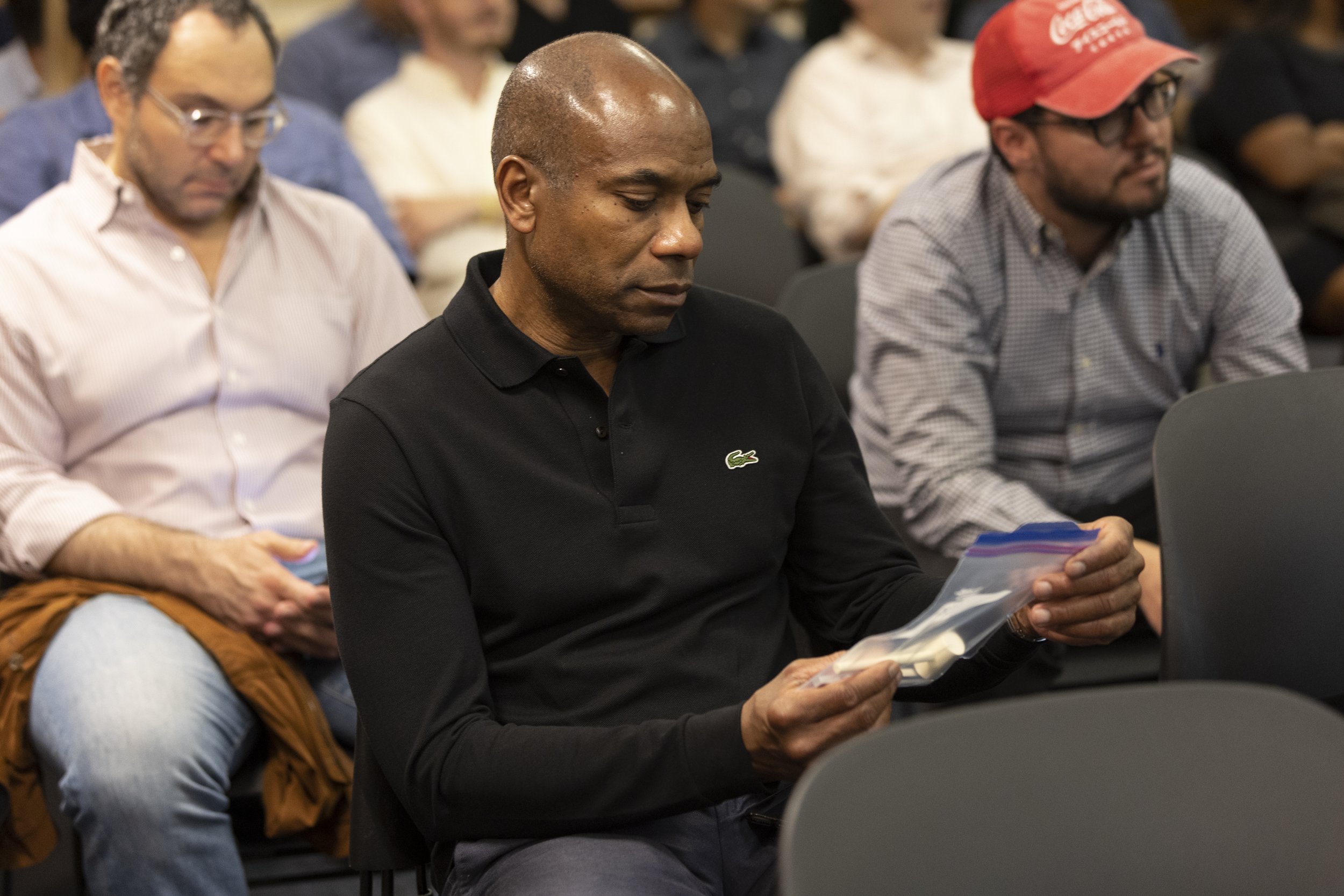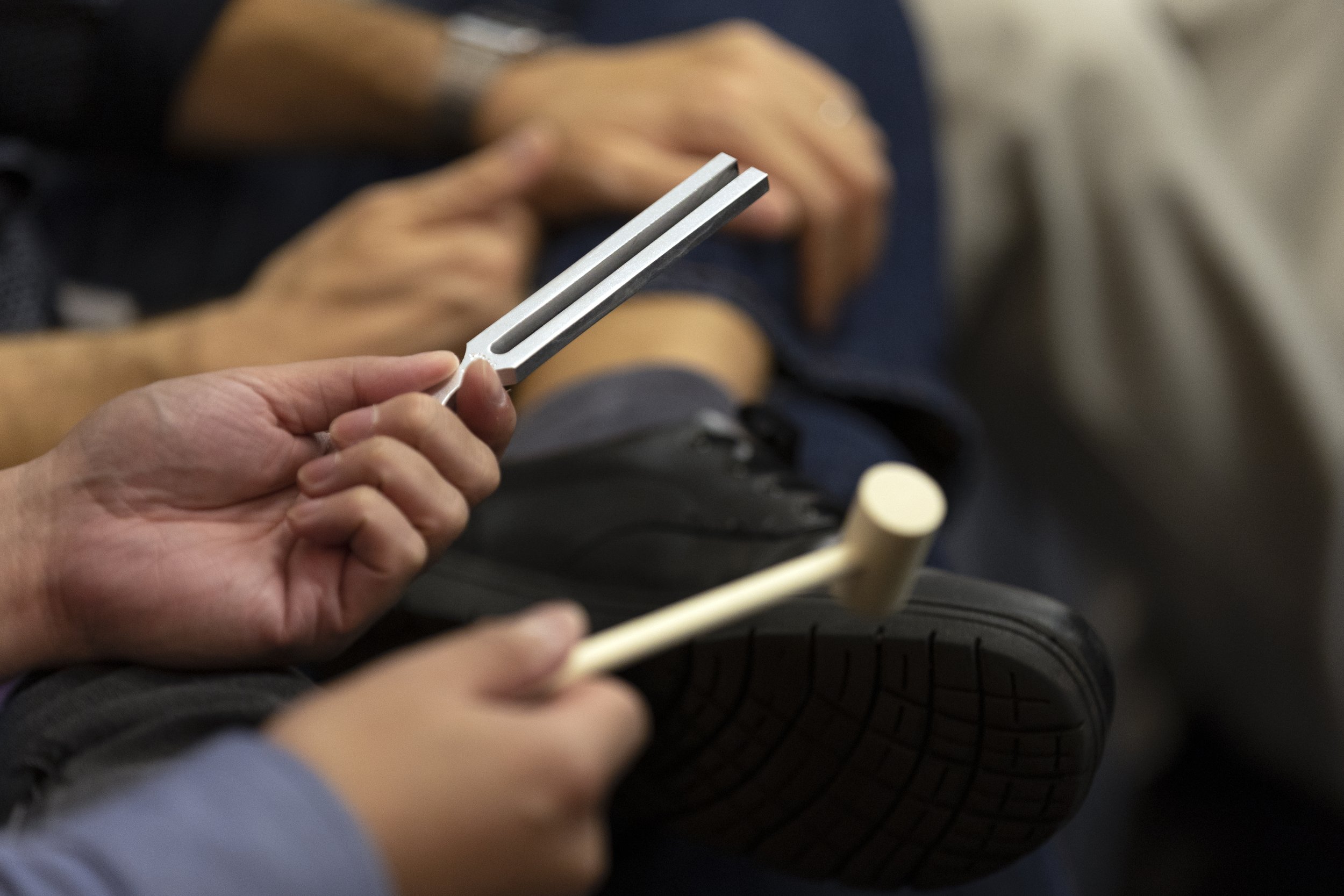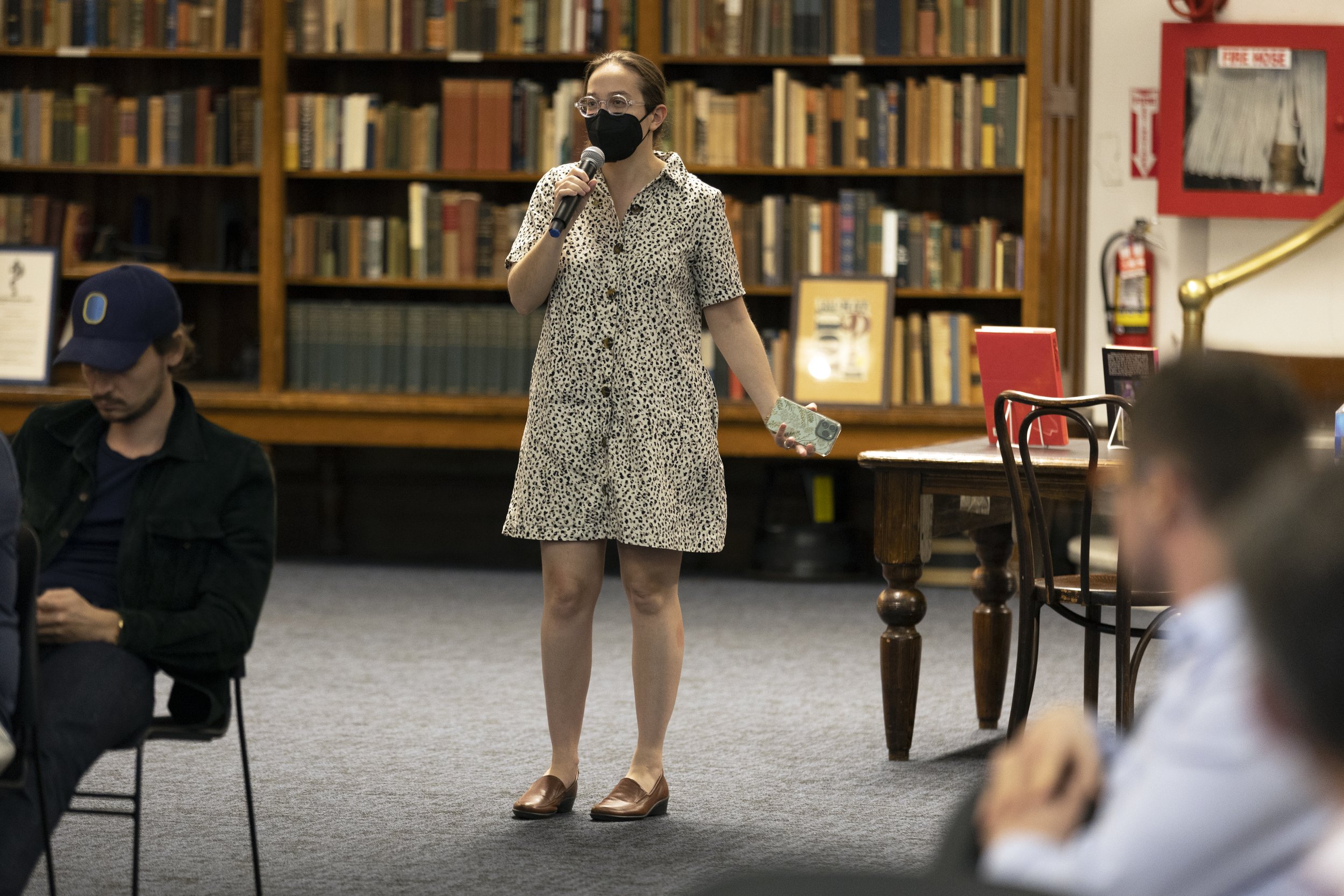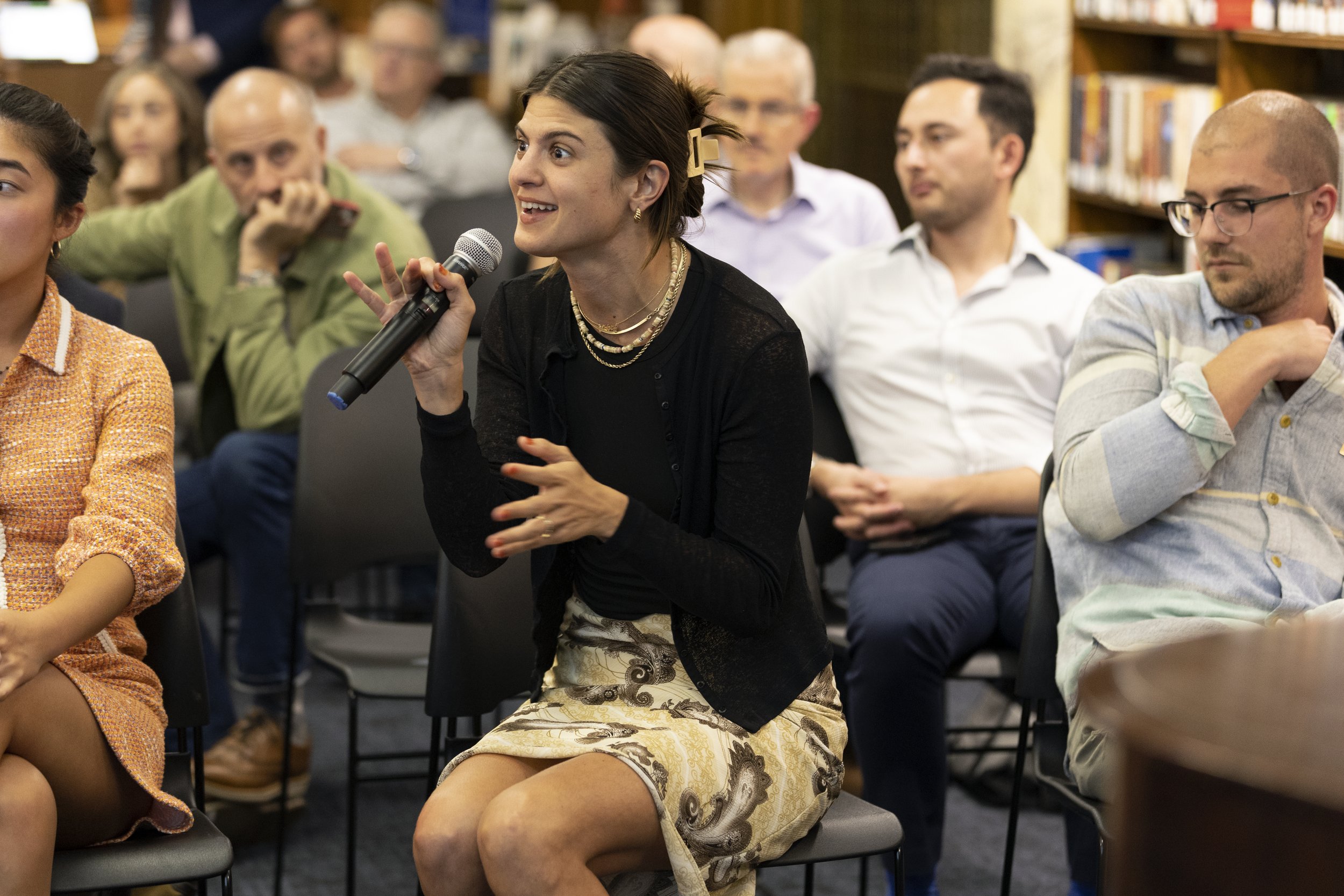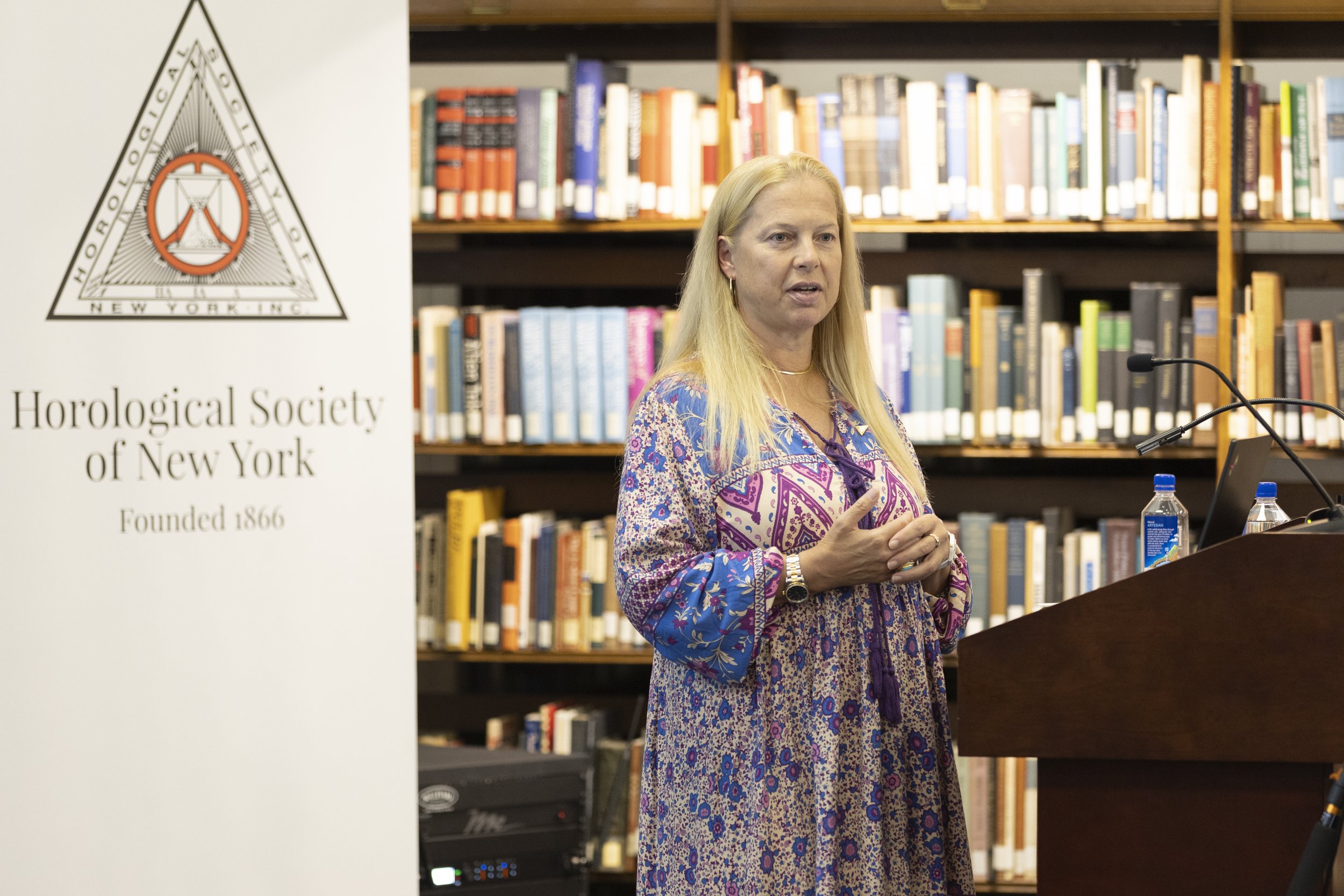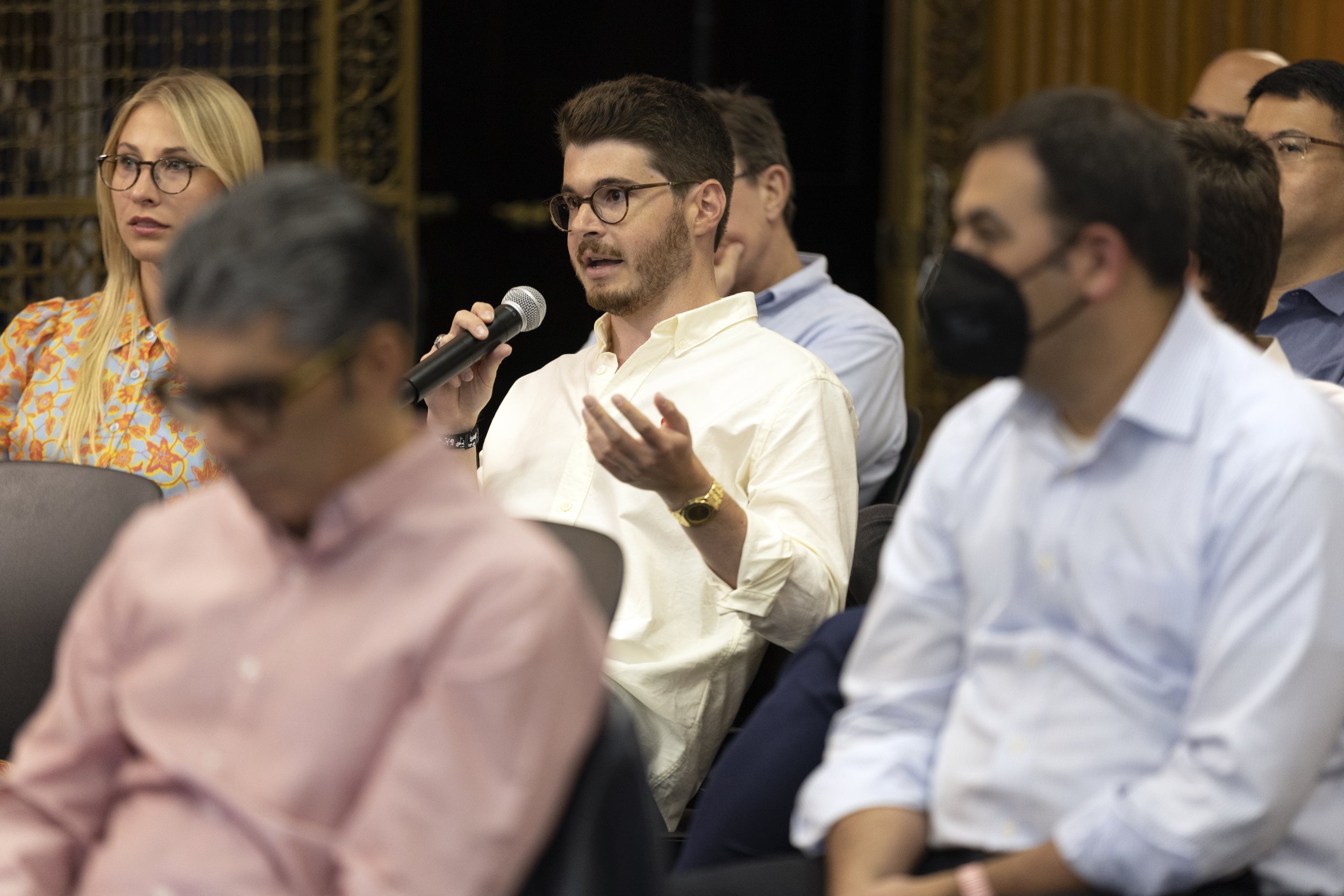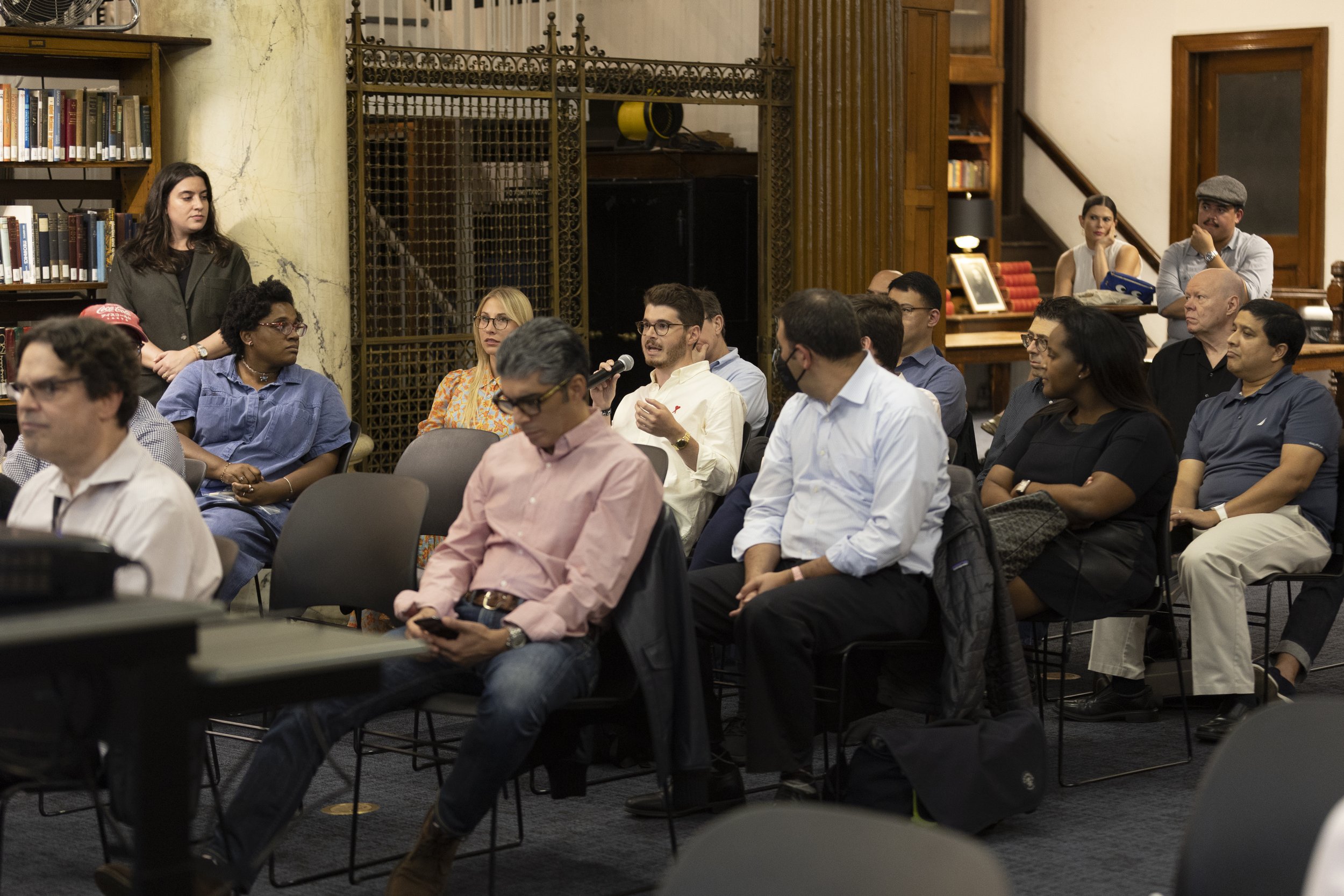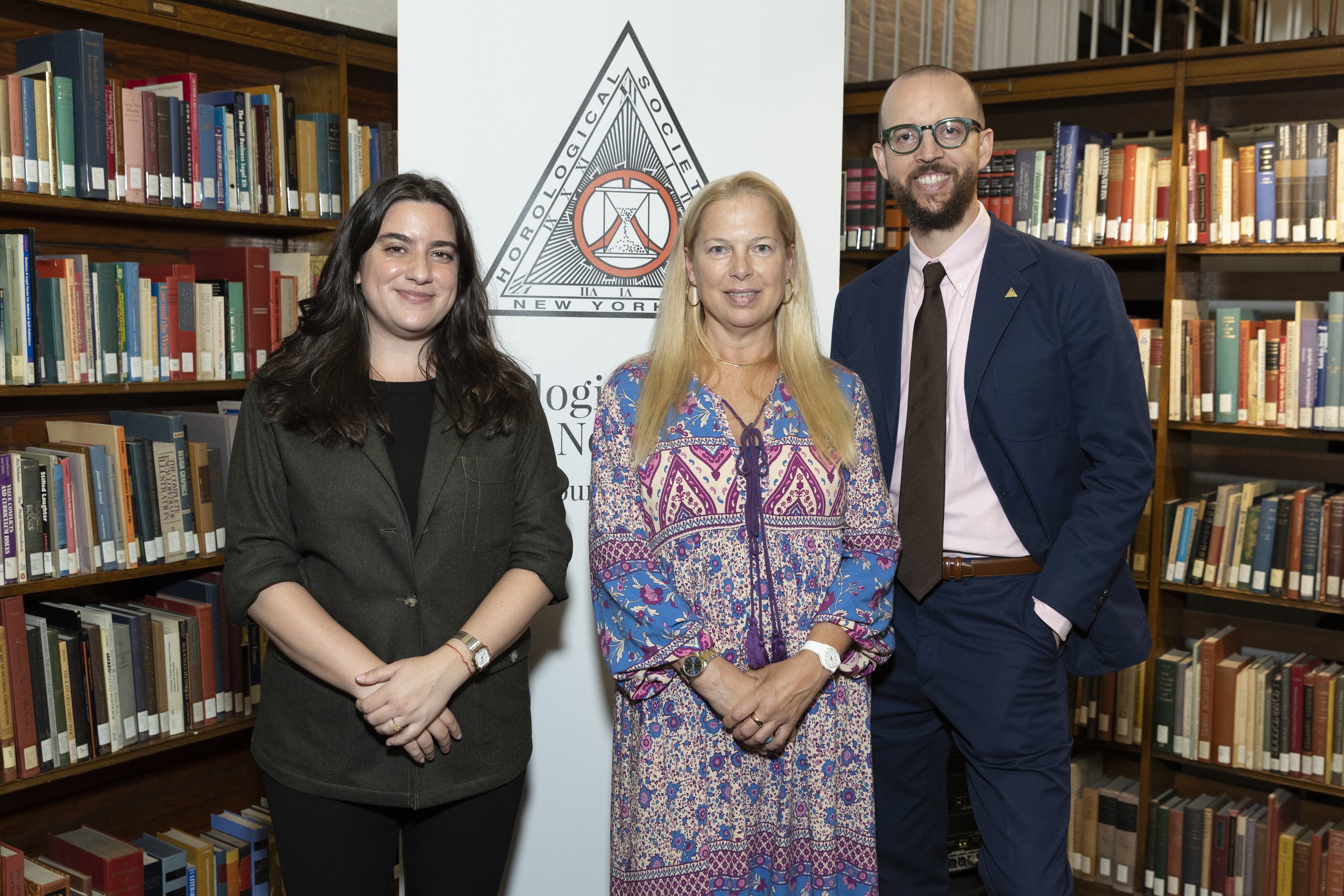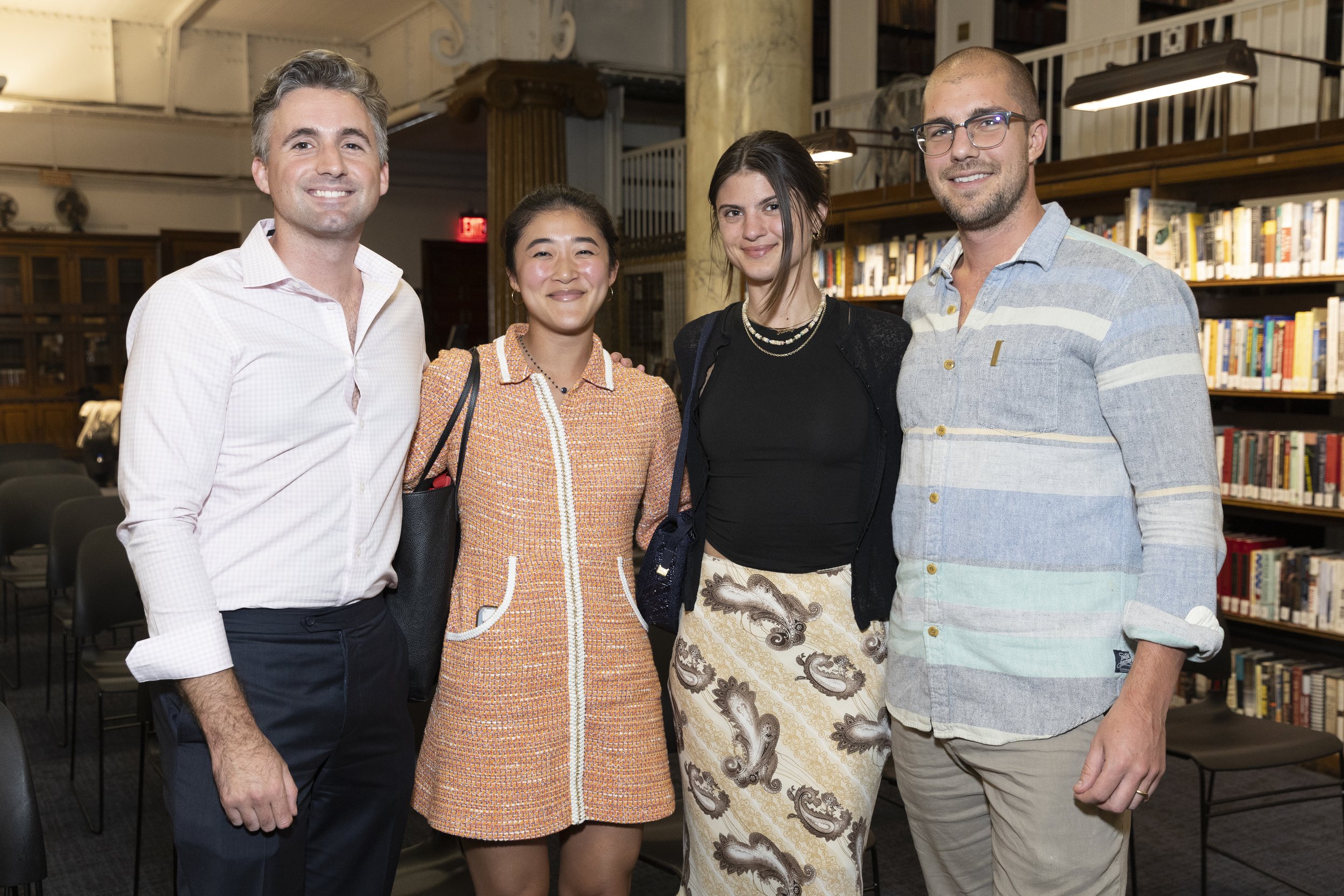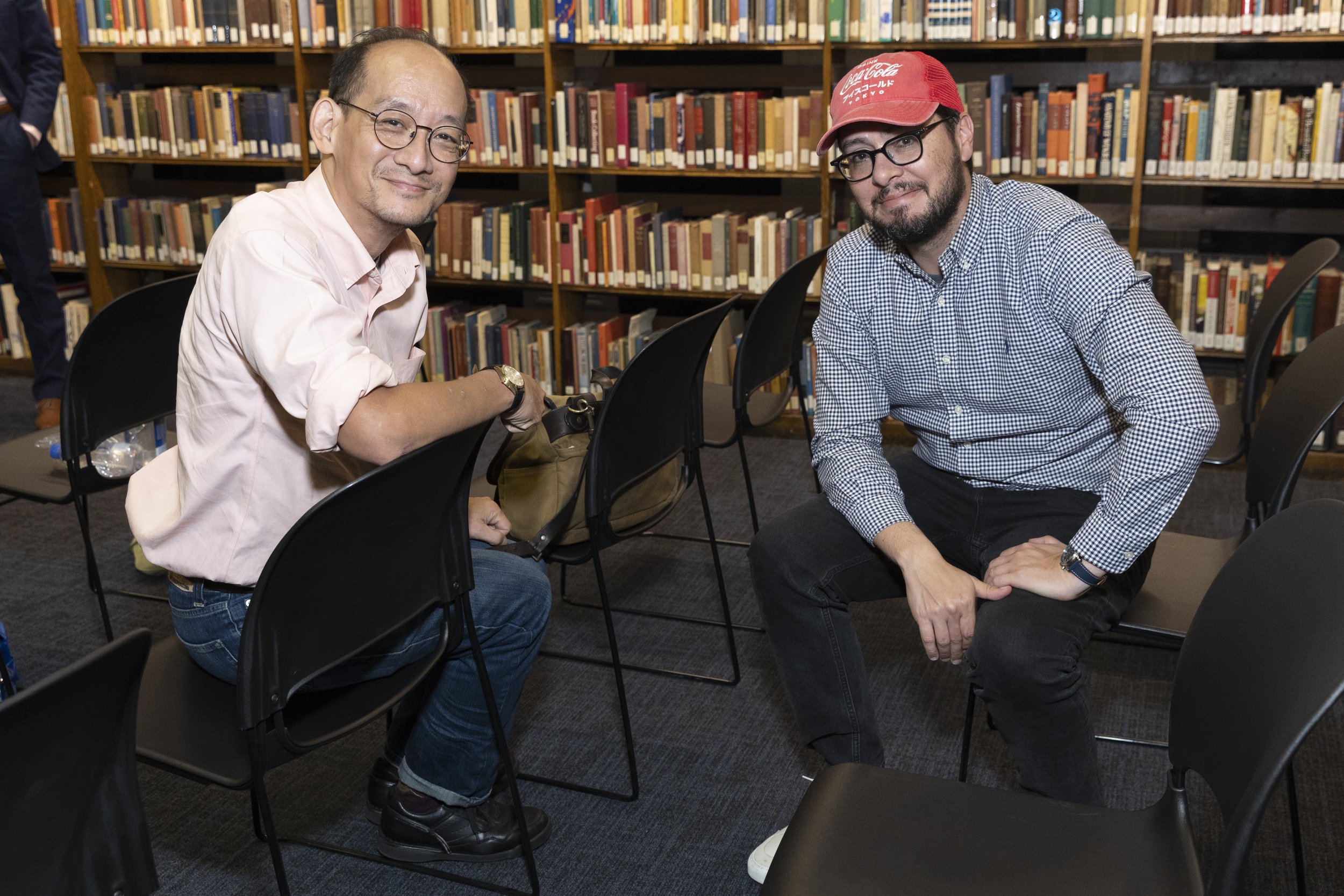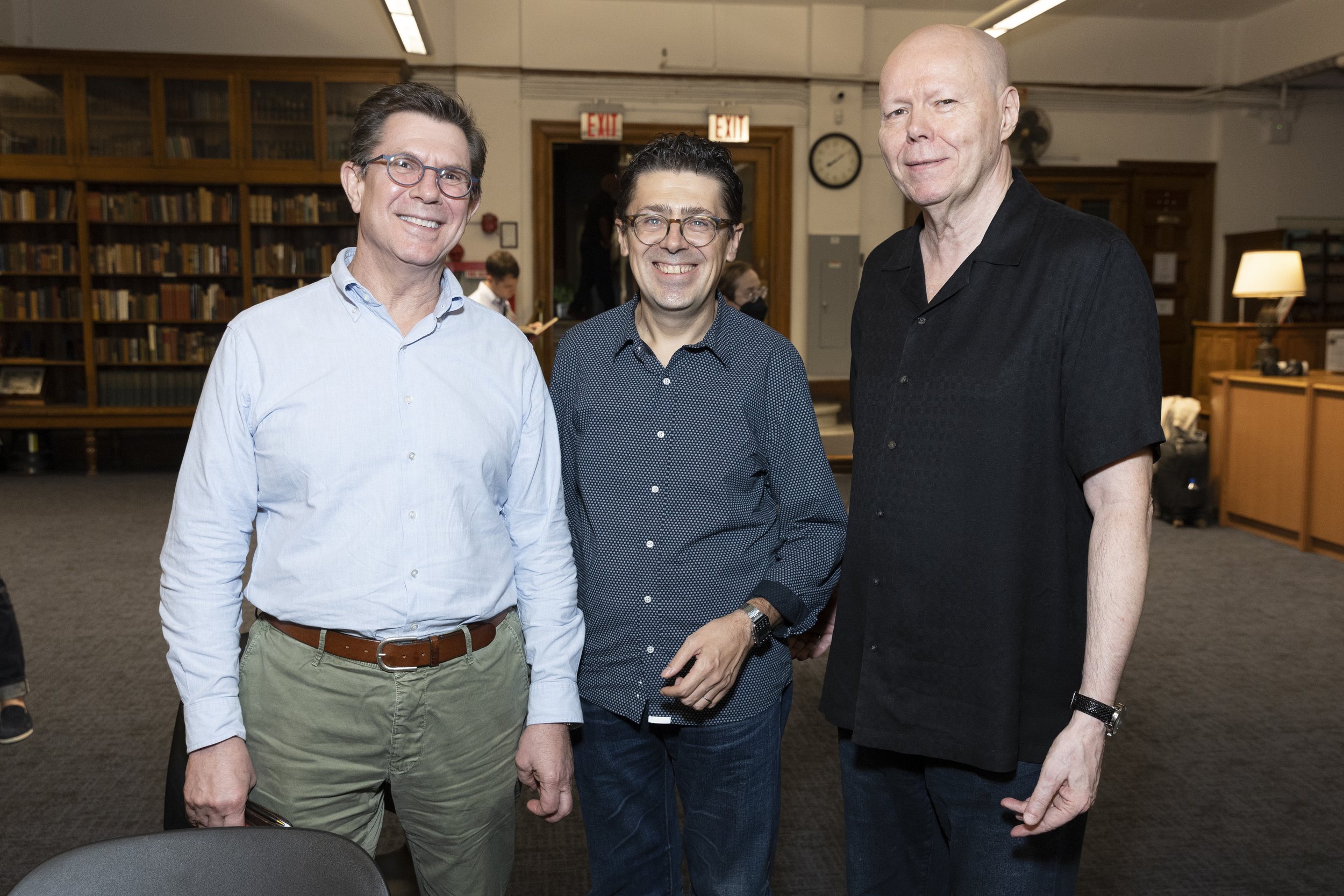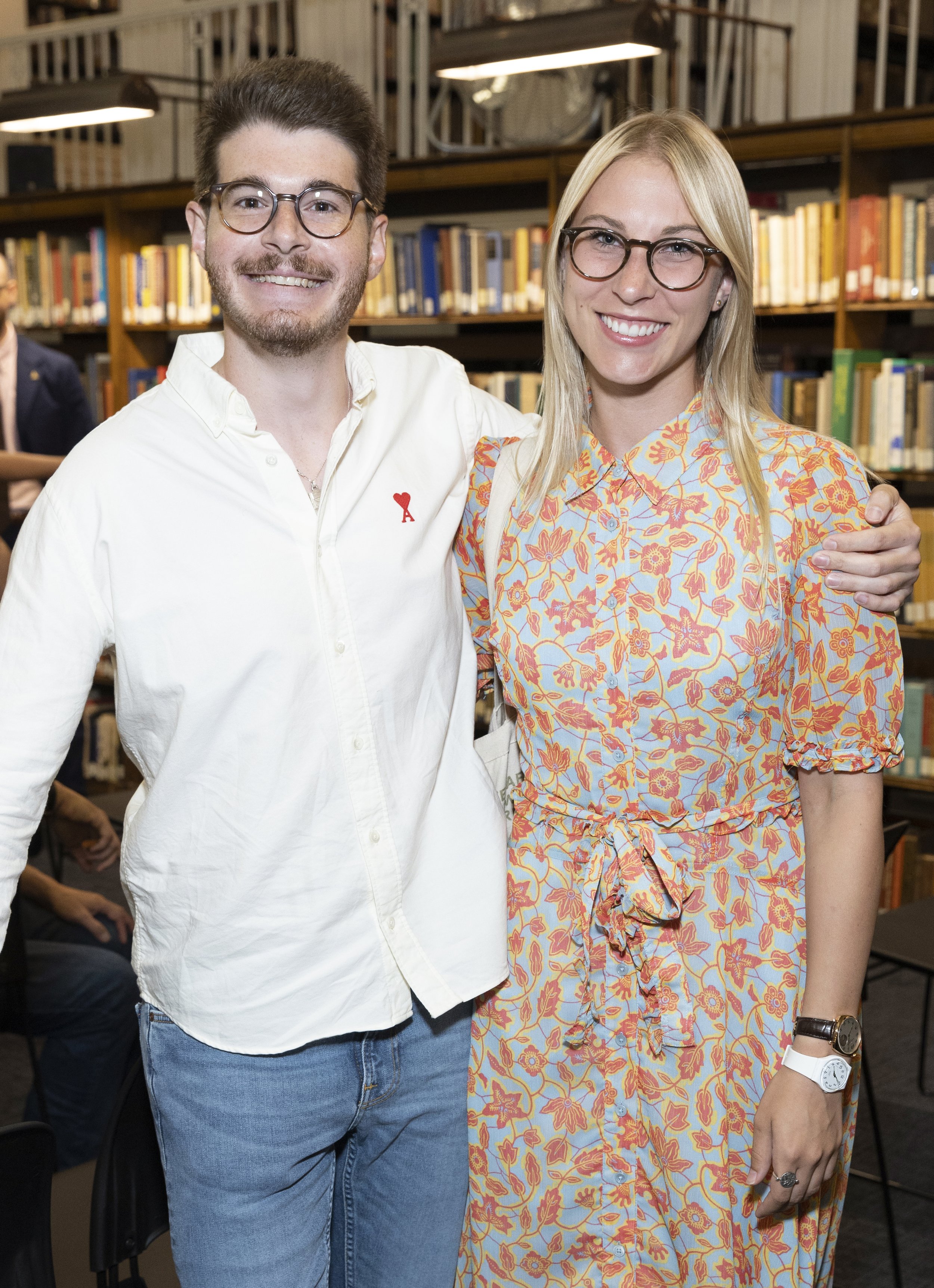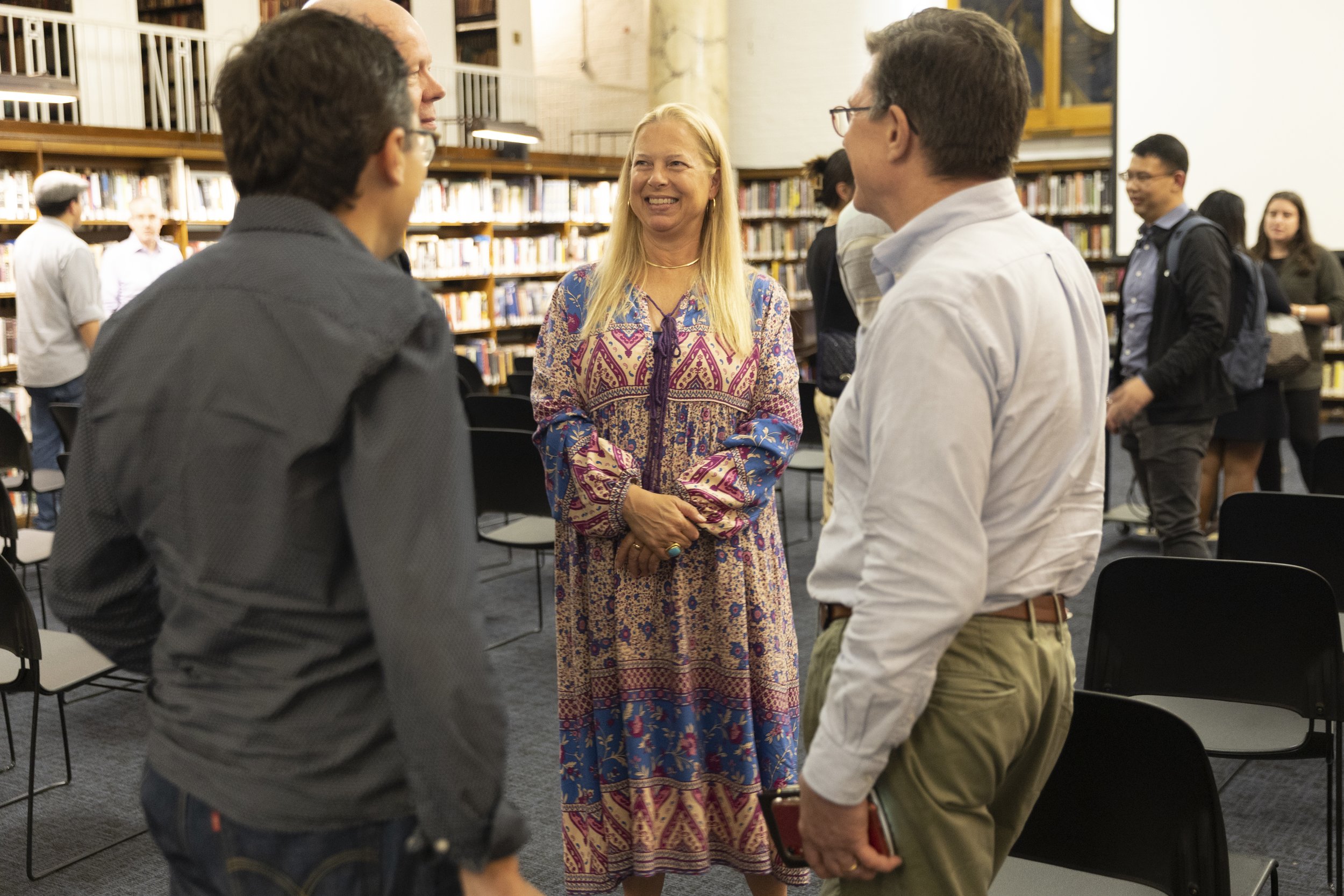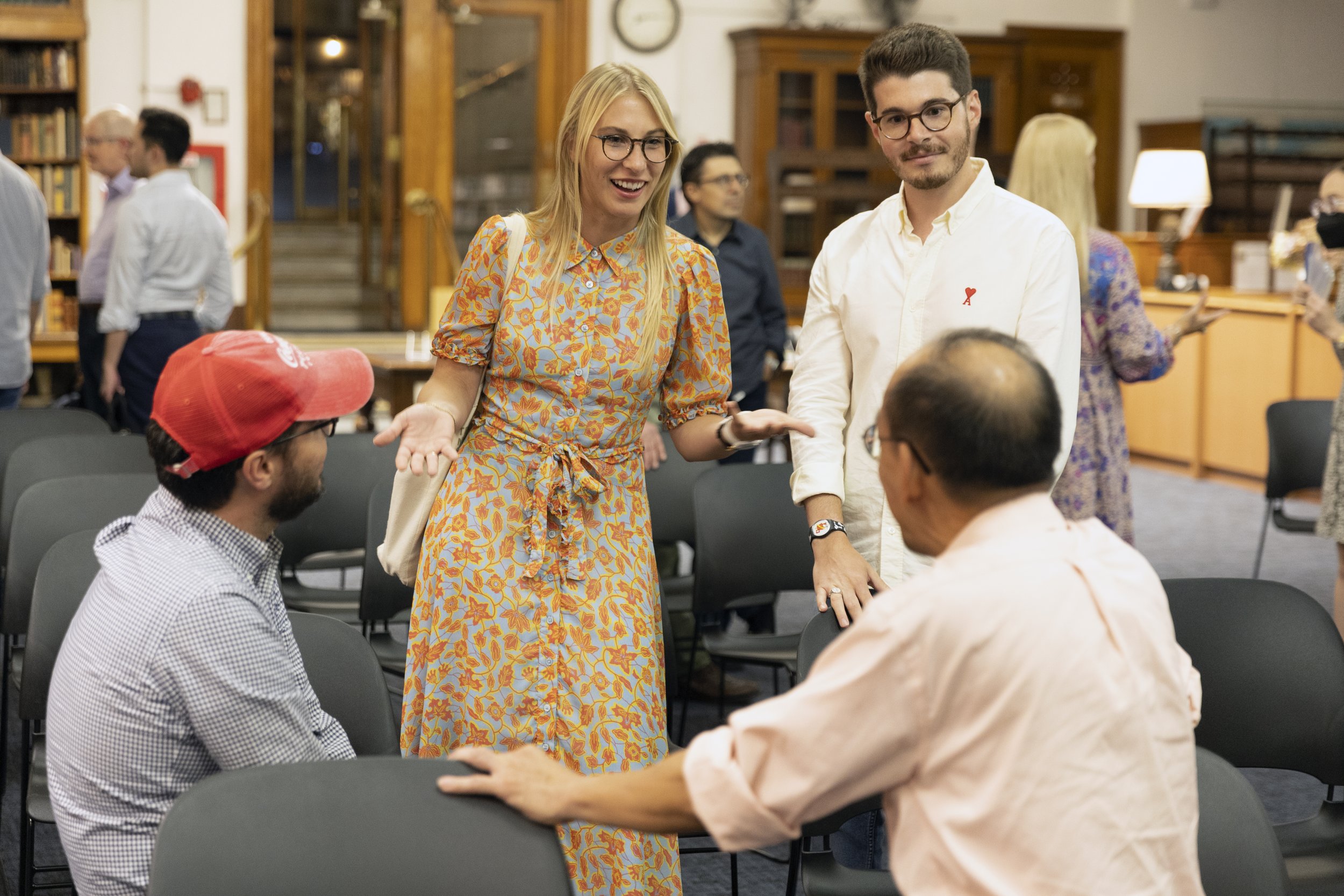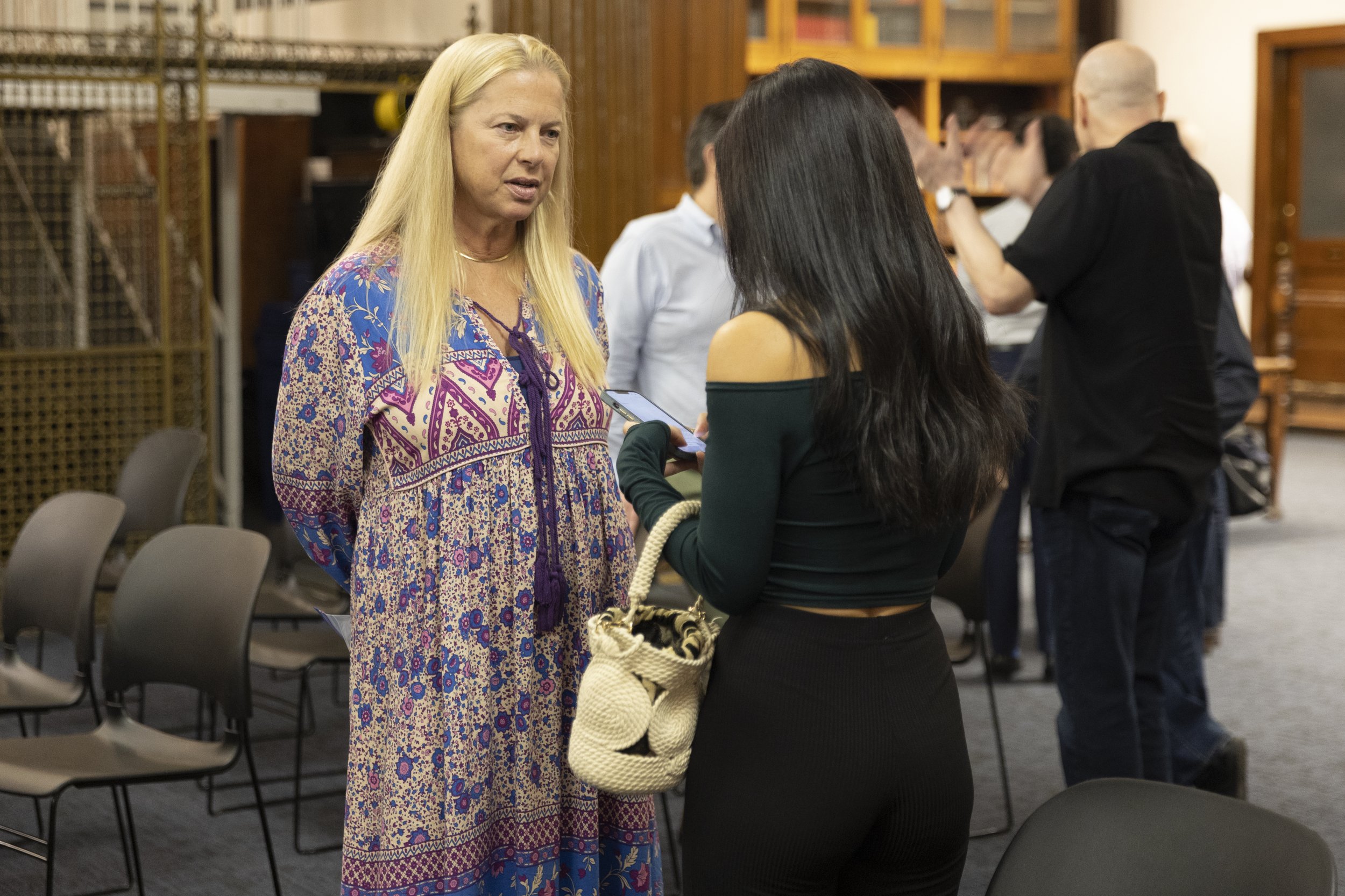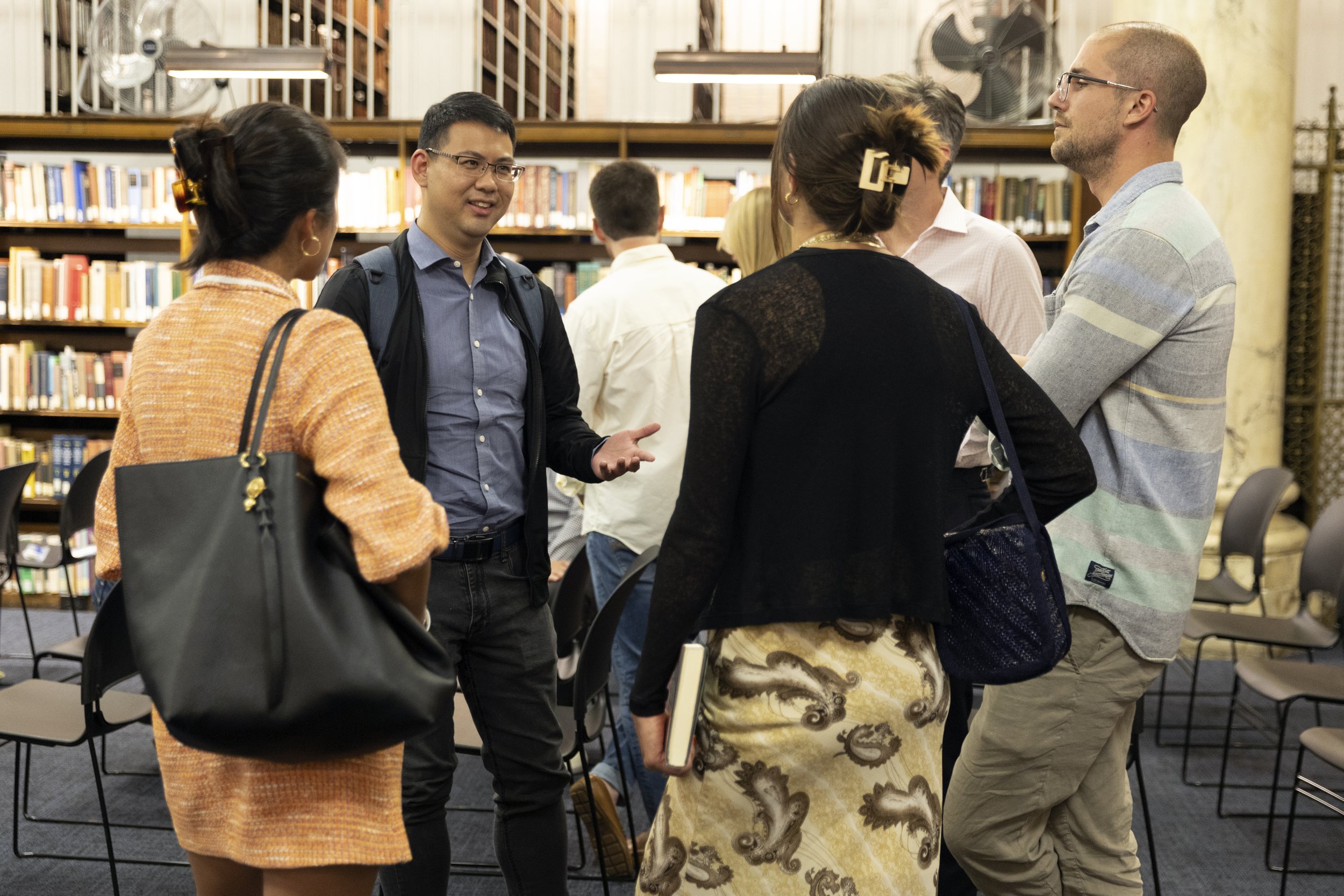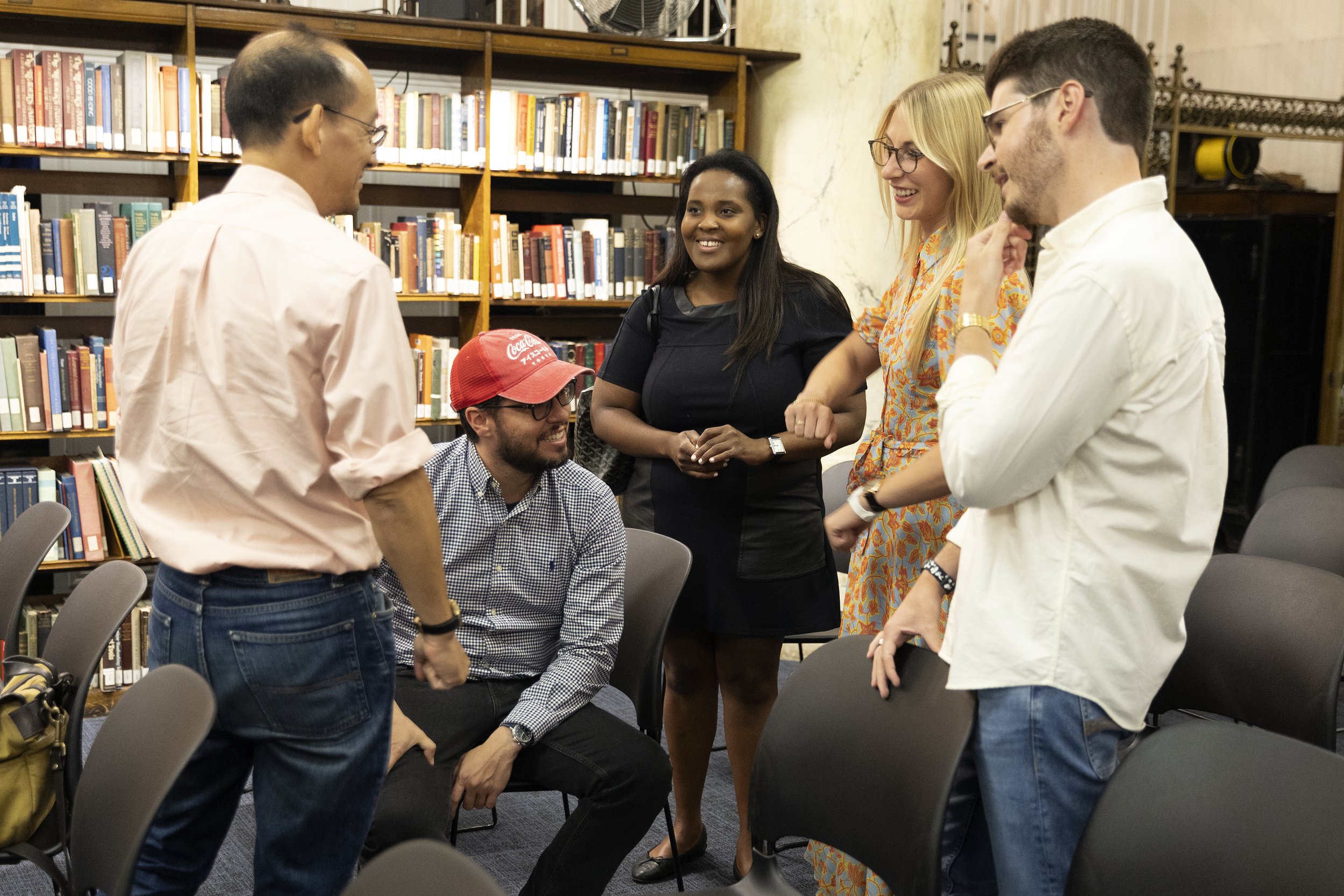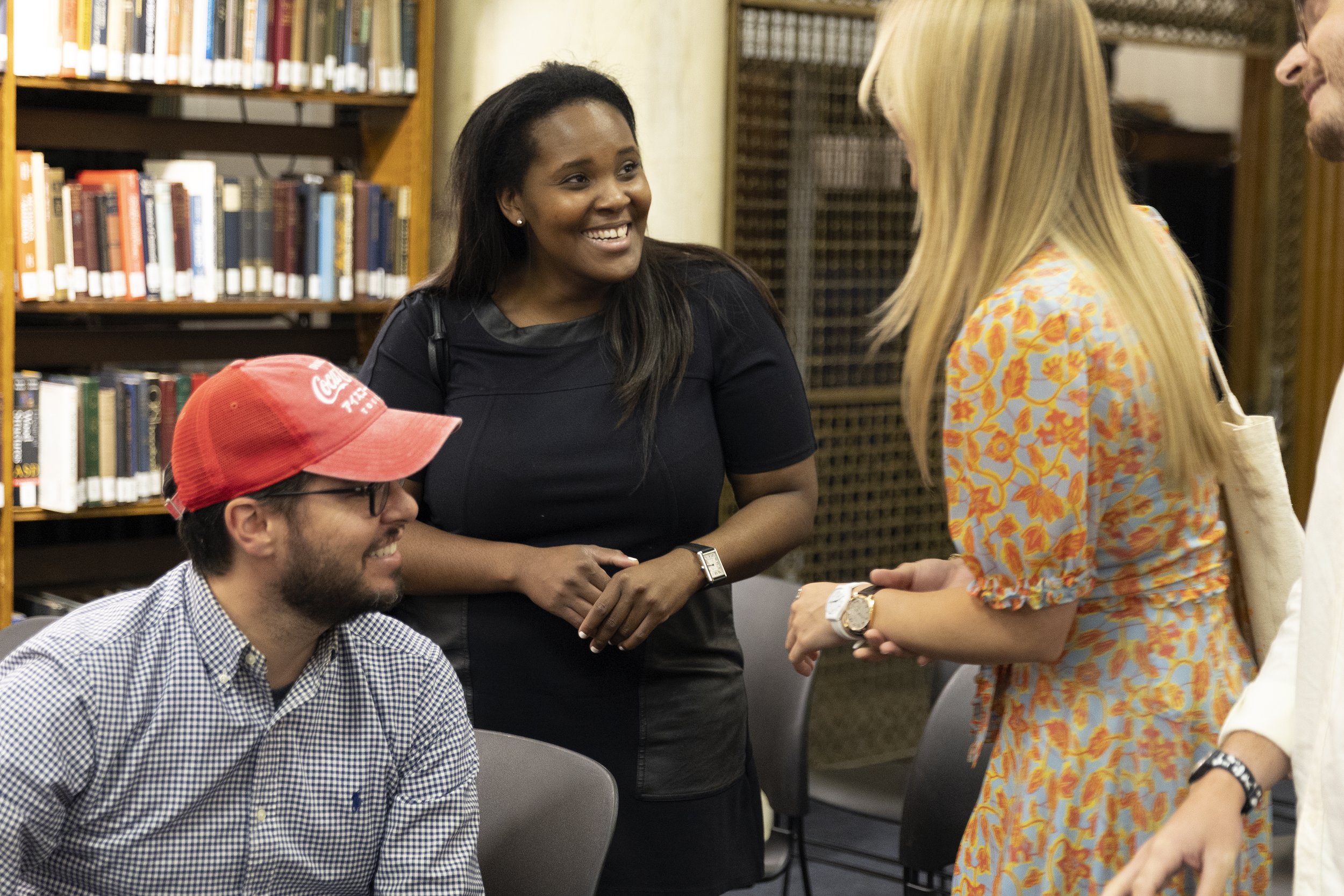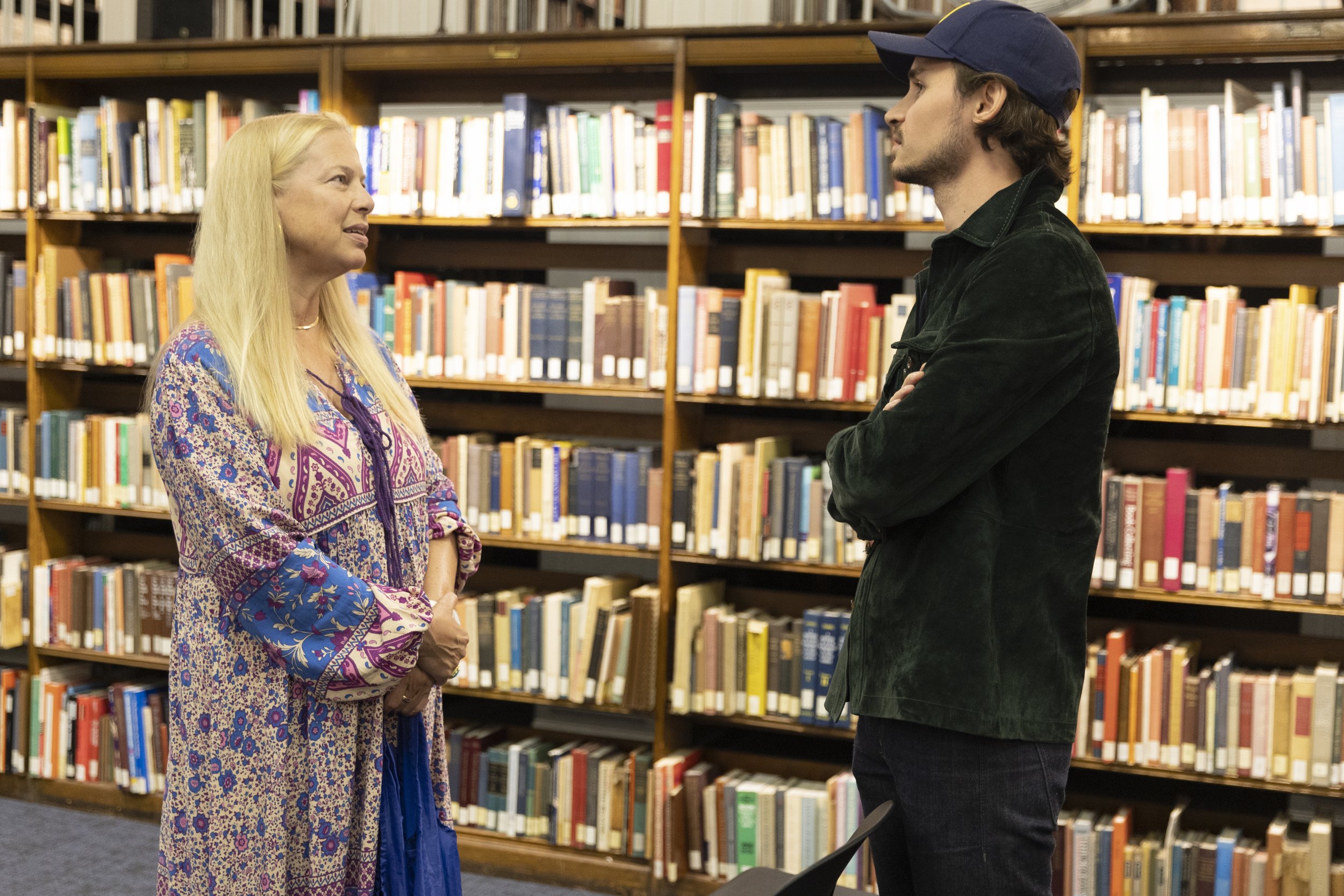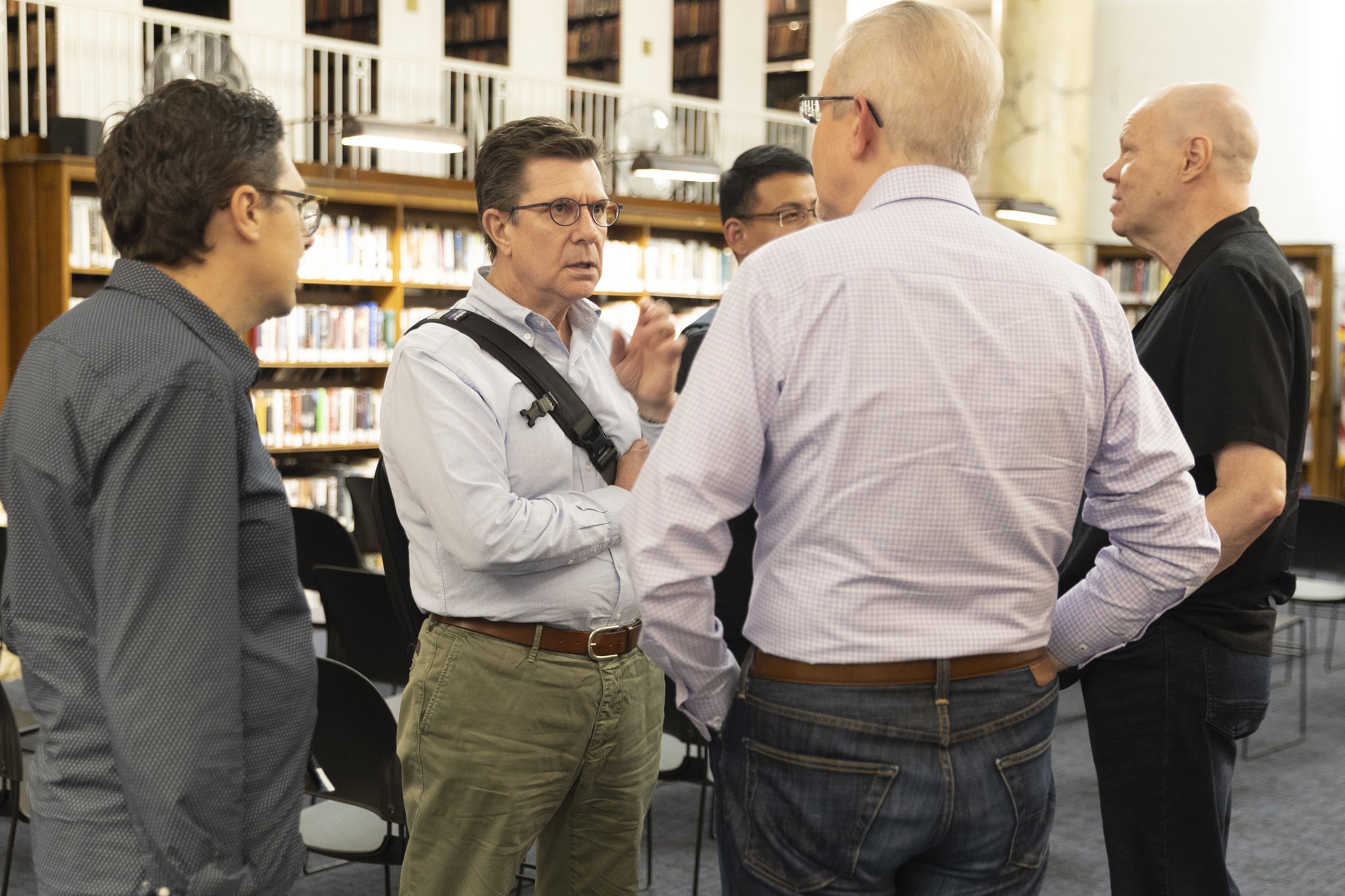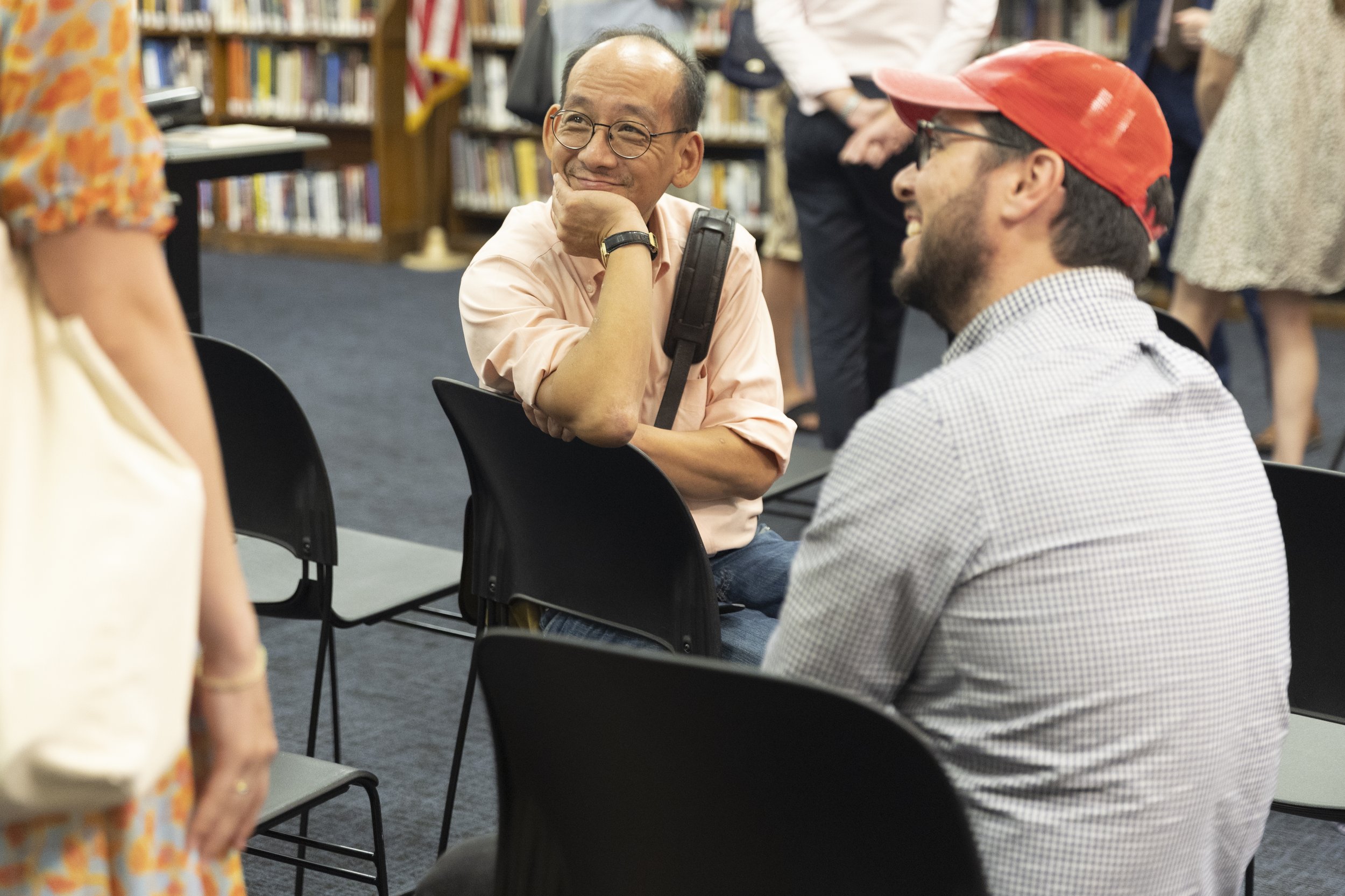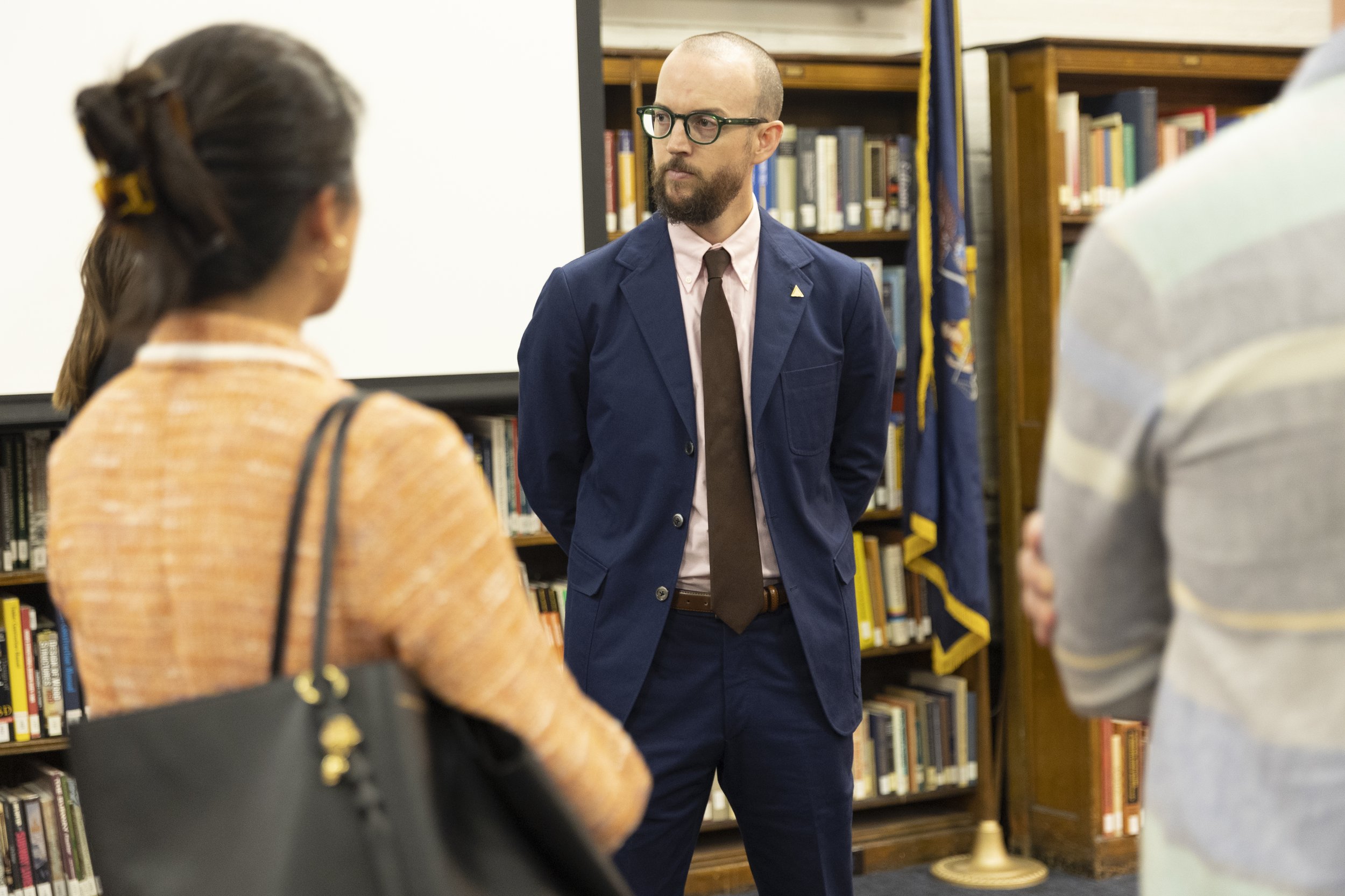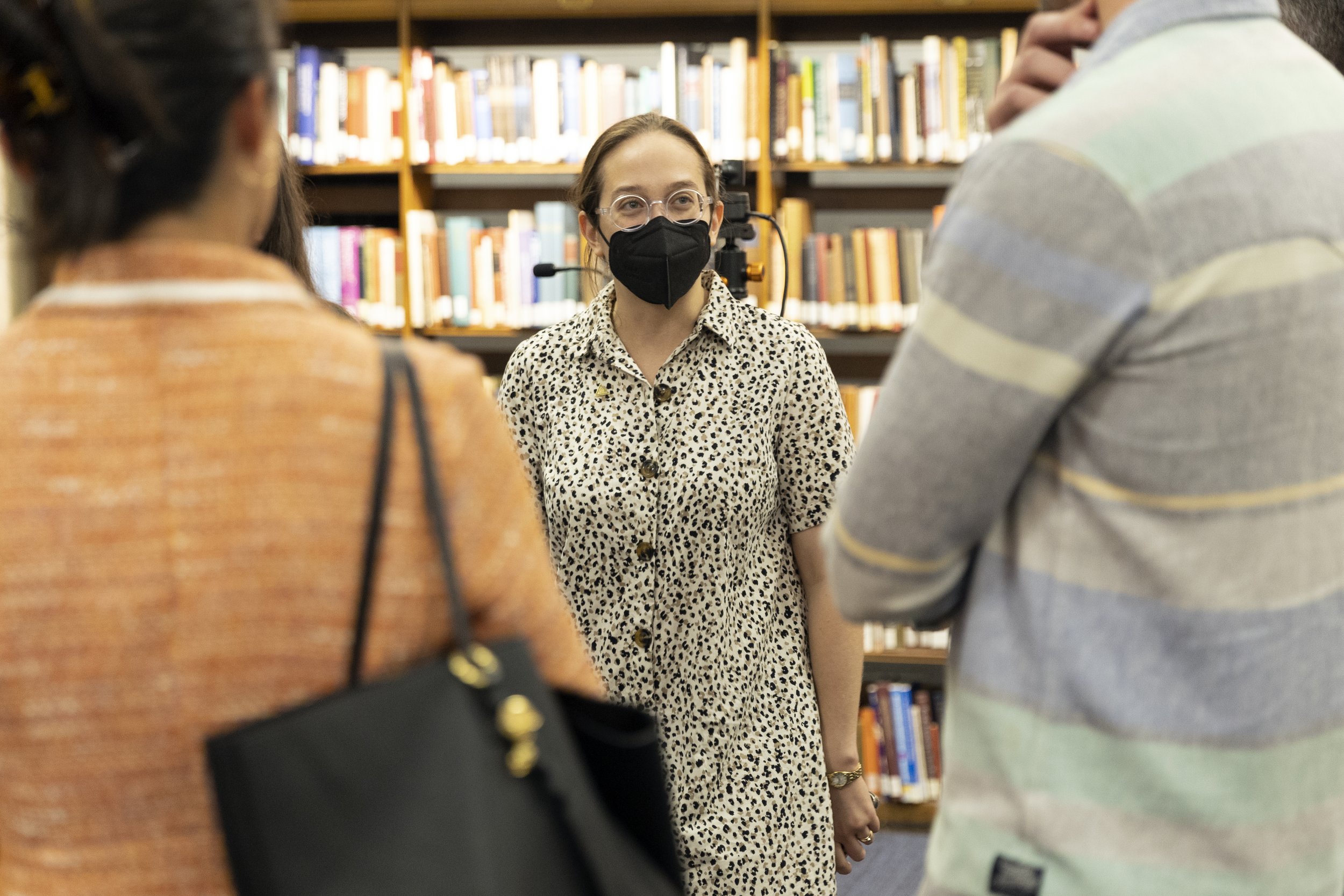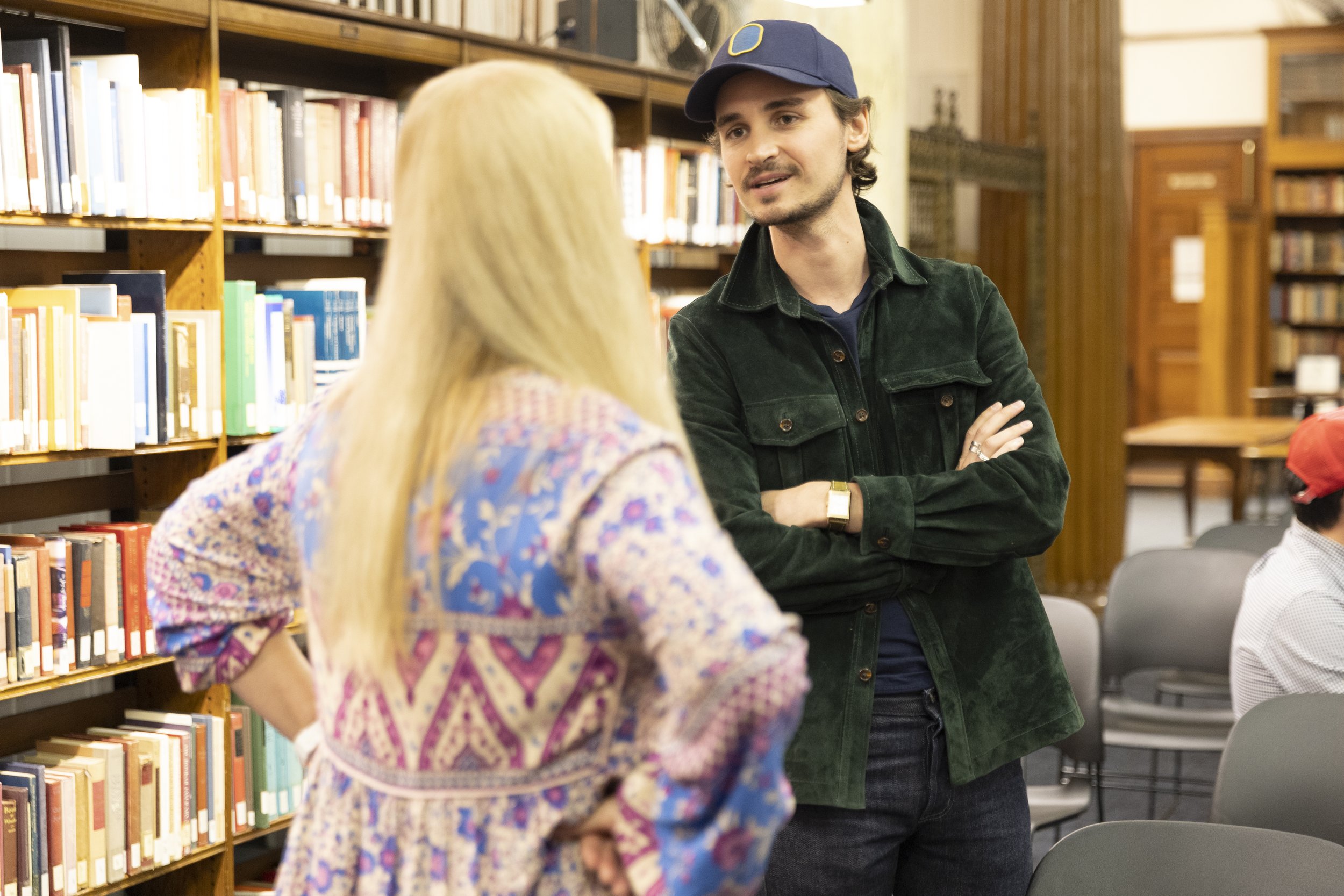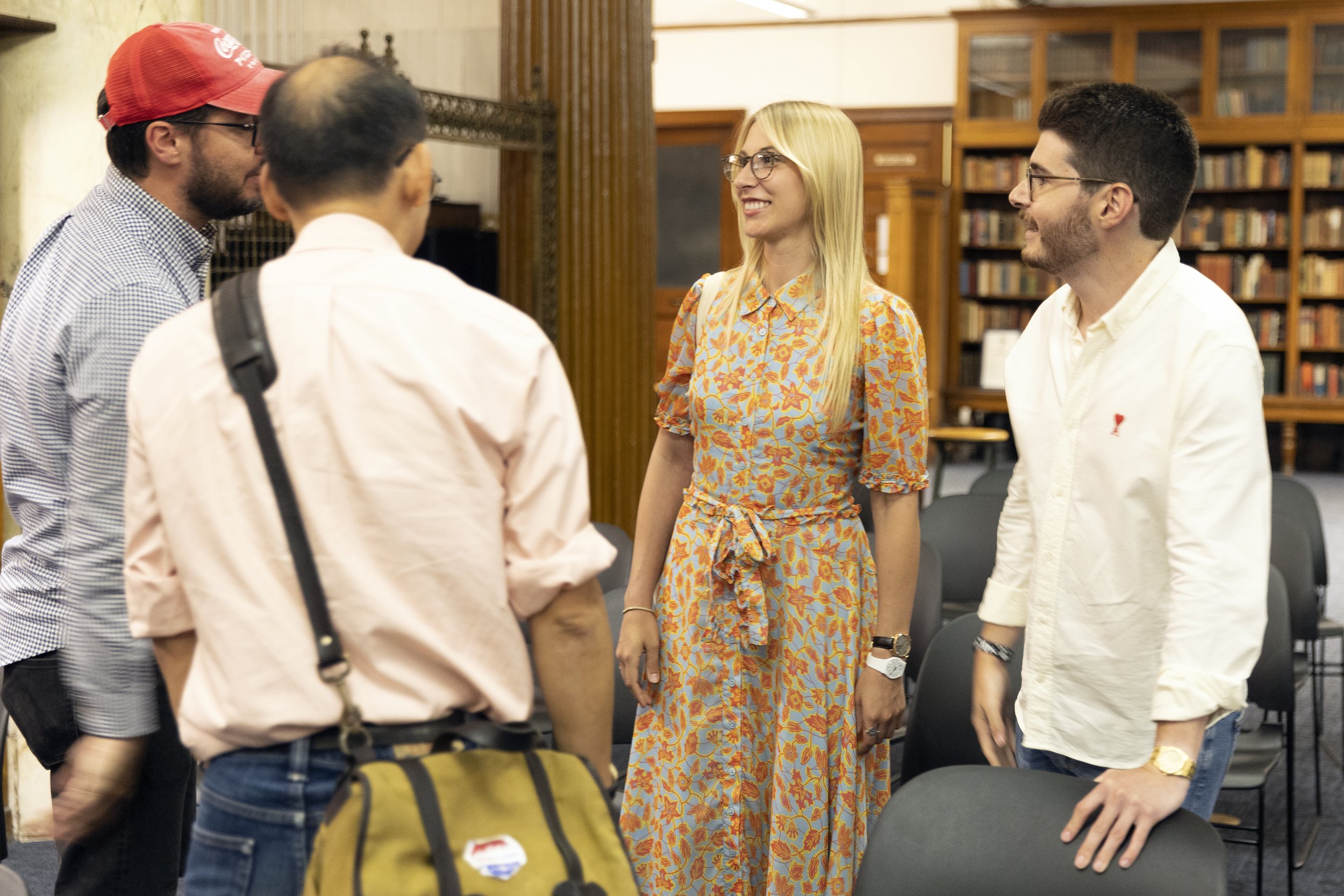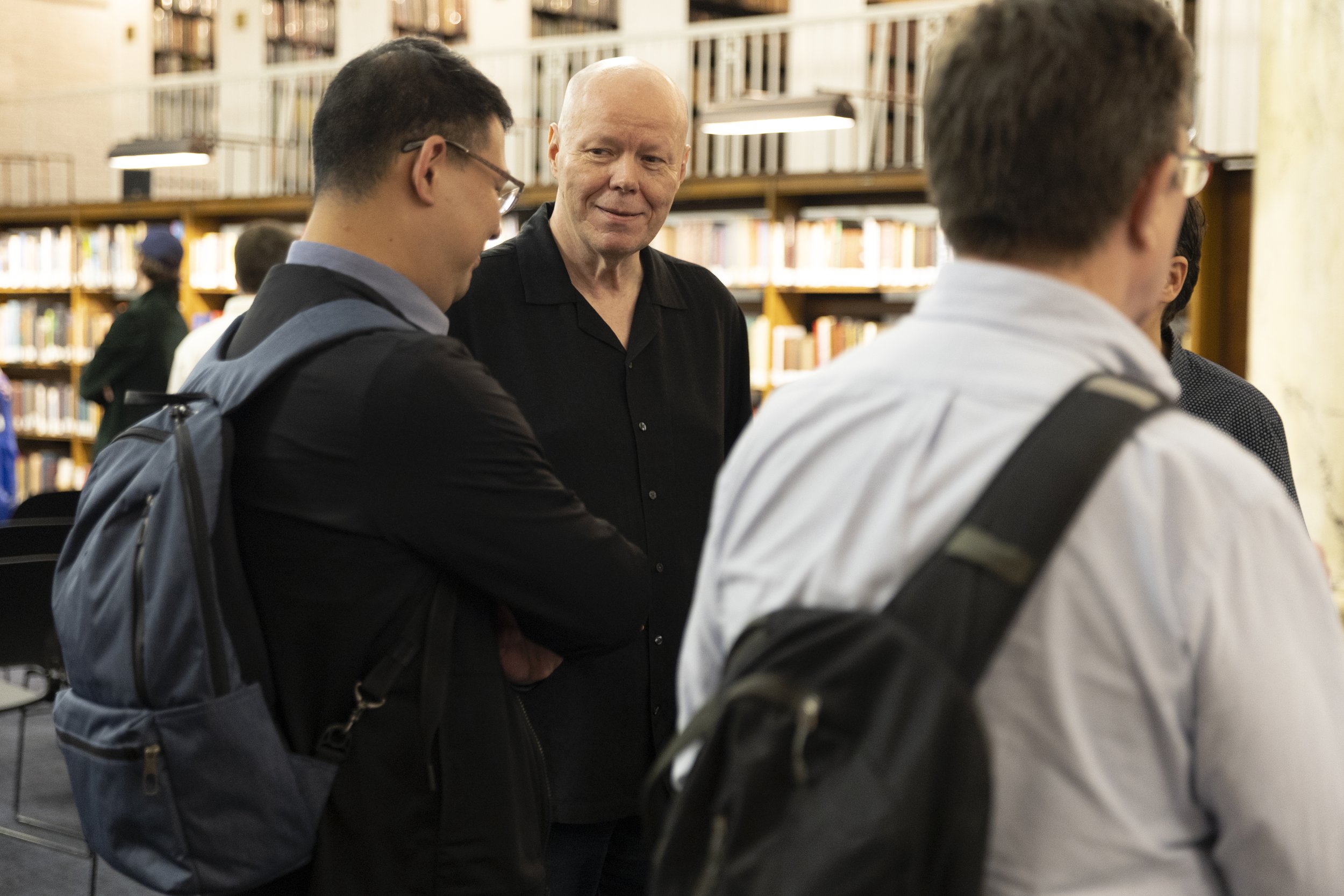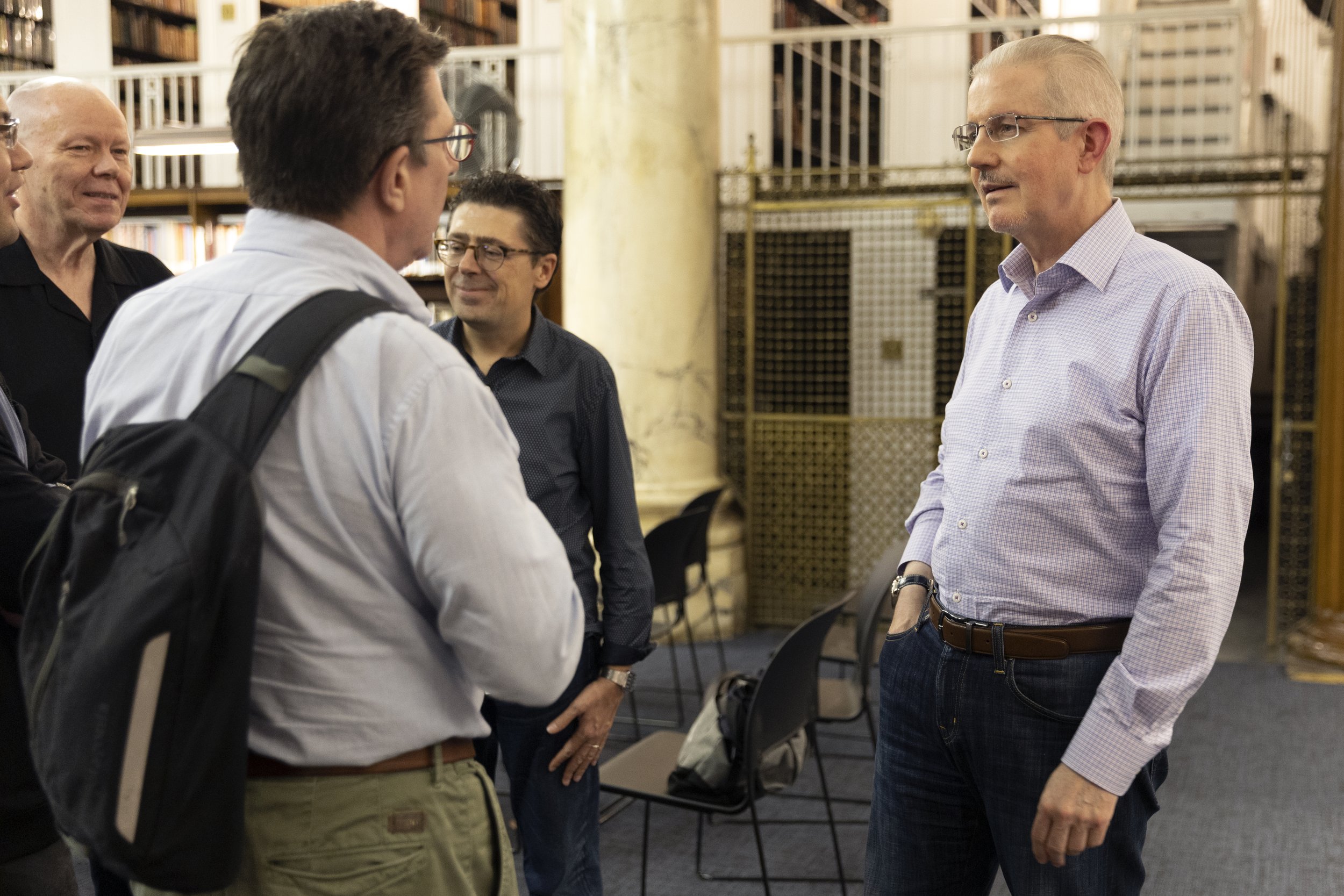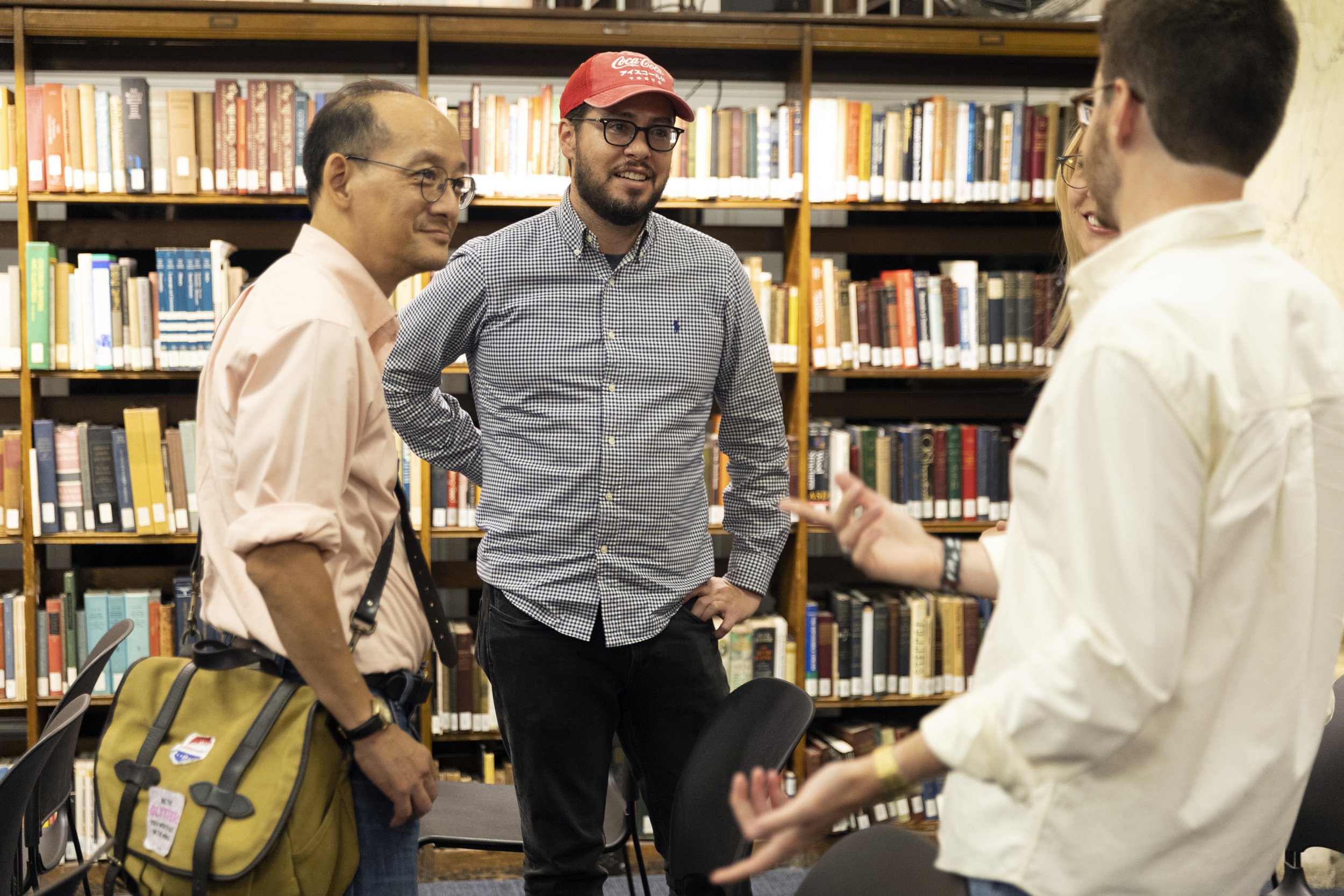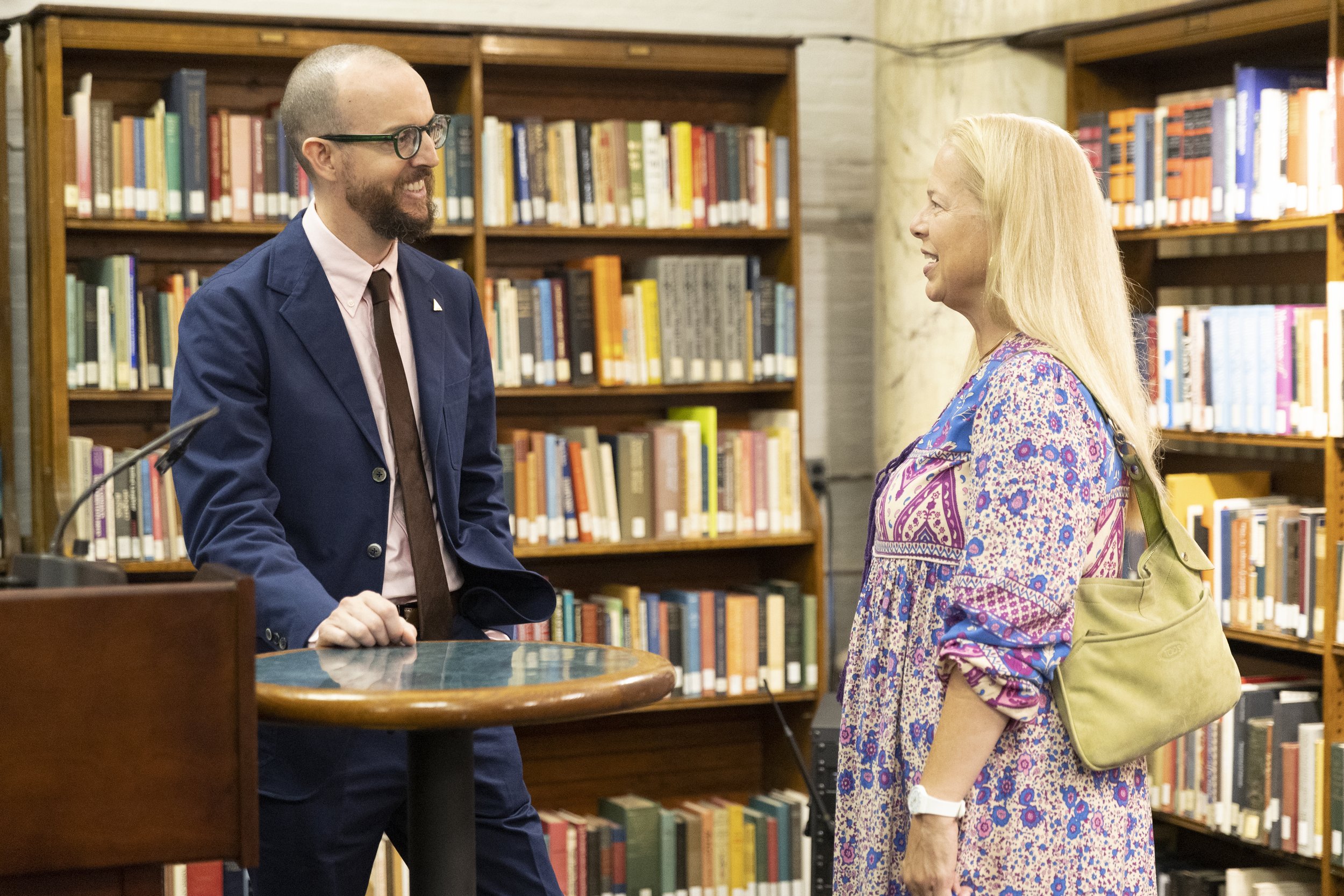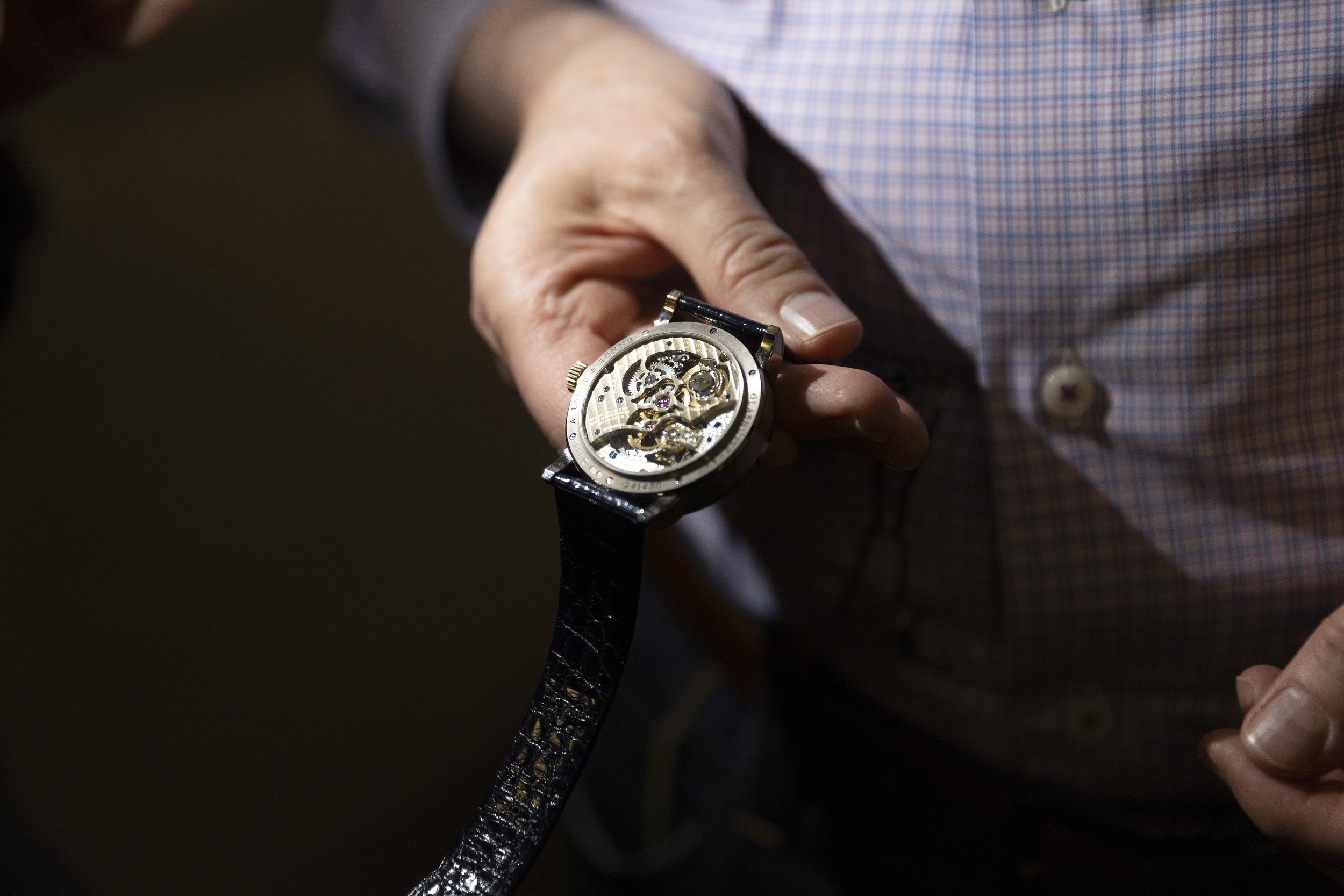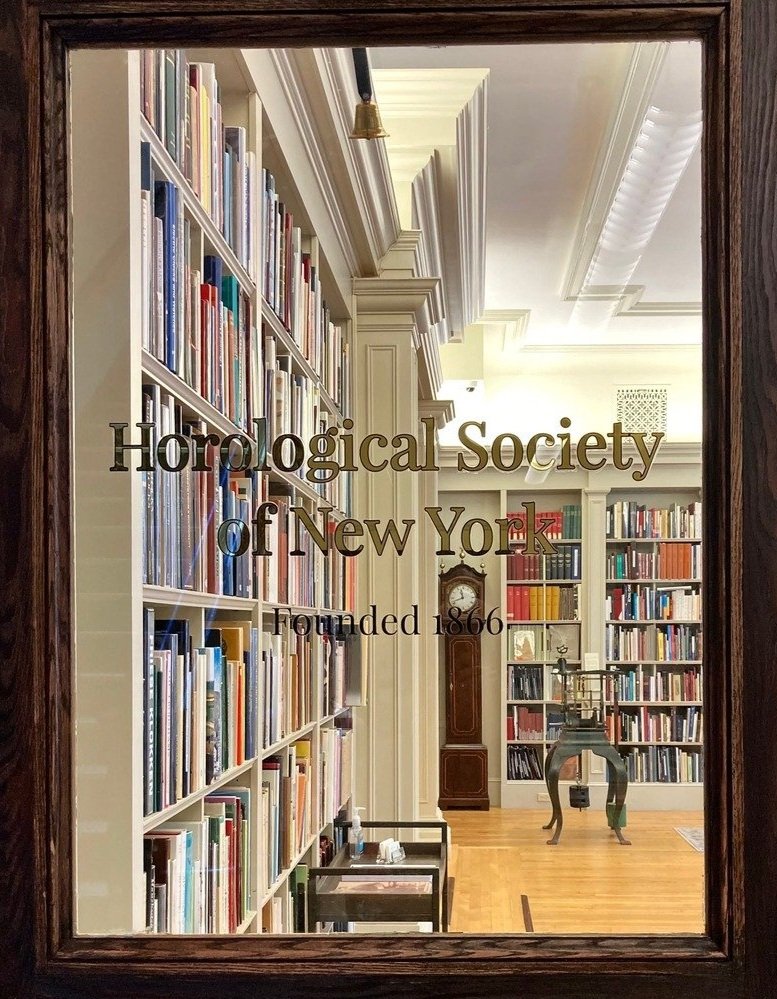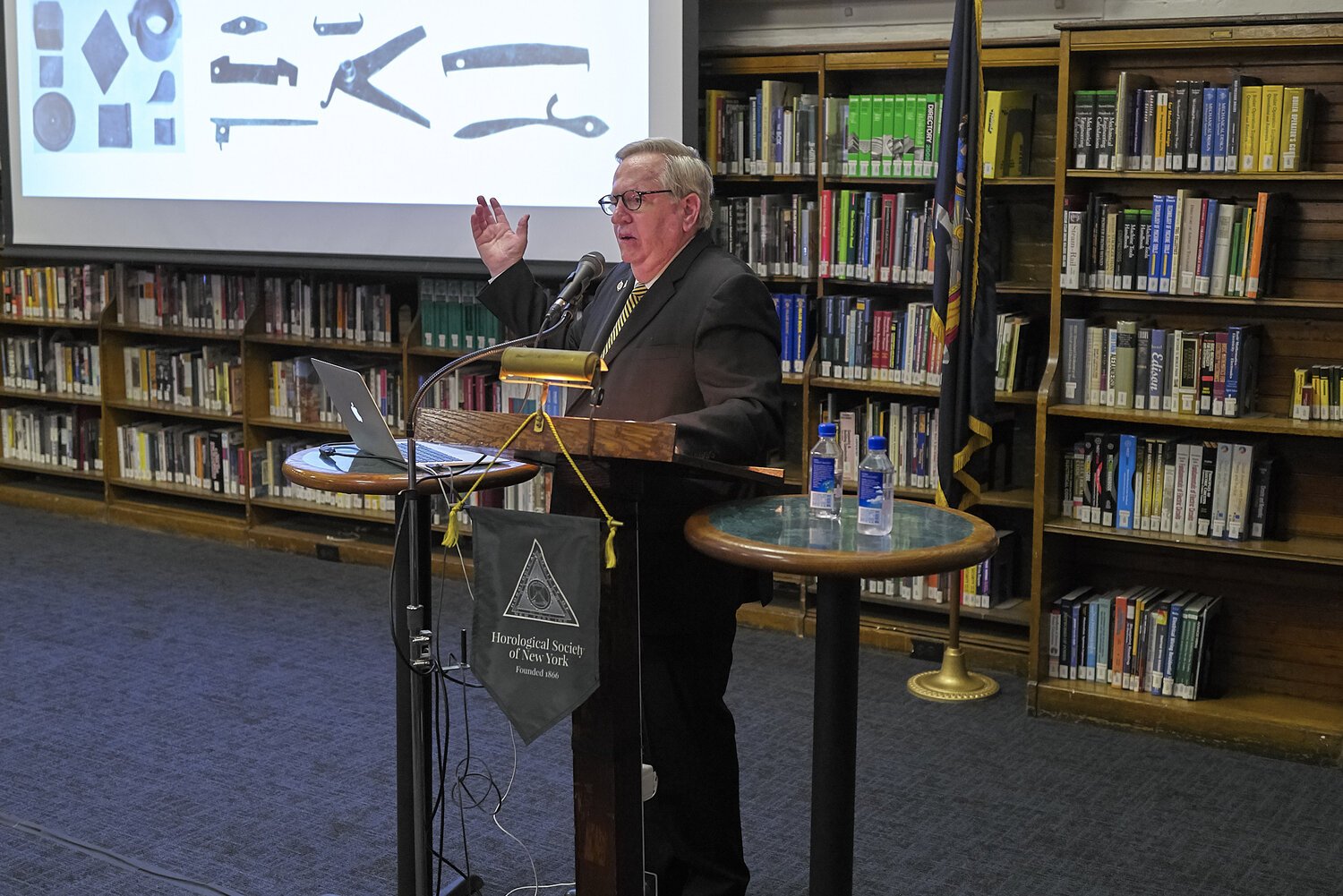After a three-month tour across the U.S. in a Volkswagen camper, Mueller-Maerki enrolled in the MBA program at Harvard University. He completed the degree in 1975 and began a 25-year career at a groundbreaking executive search firm, Egon Zehnder, “the only employer I ever had,” as he says. He and Ruth had three children.
After settling into his life in the U.S., Mueller-Maerki became a member of the National Association of Watch and Clock Collectors (NAWCC), and started taking technical classes in clock repair. “I wasn’t good enough to do watches,” he claims. He says he doesn’t have the coordination required for their tiny parts.
He also began to build his collection in new directions. “I have a collector’s gene in me,” he tells me. “I had dozens of clocks from all over the world.” But Mueller-Maerki, already a bibliophile, was very practical. Print publications were more affordable than watches and required less space than clocks – for him, it’s very important that “you can get more items on the shelf!”
Mueller-Maerki still collects anything and everything, printed or handwritten, that could conceivably be related to timekeeping, aiming to create “the broadest defined horological specialty library in the world.” He’s proud to have preserved materials that, most likely, no one else has thought worthy of keeping: brochures from swap meets, email newsletters, postcards, advertisements, and syllabi from watchmaking schools. These items together make up a truly unique and comprehensive archive of modern horology, which Mueller-Maerki has assembled with great care.
His library, still growing, numbered nearly 25,000 items at the time of donation, including books, journals and rare ephemera in many languages. He also created a comprehensive database and catalog of horological publications.
Throughout his life in horology, Mueller-Maerki has been a leader in the National Association for Watch and Clock Collectors, including as head of the NAWCC Library Collections Committee, NAWCC Board member, and Silver Star Fellow (their highest honor). His prolific writings about horology are an important scholarly resource, including articles for the NAWCC Bulletin on diverse topics: longcase clocks, astronomical dials, and how watches were used to identify the dead during World War I.
Horologist and longtime friend Bob Frishman writes: “The incredible study tours he led were in Europe and America, and included visits to private collections and museum storage areas where the public is not invited…His extensive contacts and friendships here and abroad provided that special access.”
Donating the library
Mueller-Maerki donated his library to HSNY with the intent to make it available to the largest number of people possible and to aid in future horological research. Over the course of the pandemic, the collection was painstakingly relocated from his house in New Jersey to New York City.
In choosing the name for the library, he decided to honor Jost Bürgi (1552-1632), a brilliant Swiss clockmaker, mathematician, and astronomer. Bürgi worked as an engineer in the court of Holy Roman Emperor Rudolf II, inventing several important horological devices that allowed clocks to become much more precise. He is also one of the mathematicians credited with the discovery of logarithms.
We dedicated the library in a ceremony on October 21, 2022, unveiling a plaque with Mueller-Maerki’s likeness. Mueller-Maerki is the Librarian Emeritus and visits the collection regularly.
The building and space
When you visit, you’ll get a chance to explore the historic General Society Building in which our library is located. It was built as a boys’ school at the end of the 19th century. The building now belongs to the General Society of Mechanics and Tradesmen, which was founded in 1785 and still provides free courses on topics like HVAC systems and construction project management. It’s also a frequent filming location for New York-based productions. The room that the General Society uses as a library (and that HSNY uses for monthly lectures) was originally a gym that schoolboys used for military drills.
A number of other organizations including HSNY, the Institute of Classical Architecture & Art and the New York Botanical Garden occupy offices on different floors. We’re on the fifth floor in a beautiful, 2,000-square-foot purpose-built library with grand, arched windows. It’s a great space for quiet research, watch-related events and horological community gathering!












